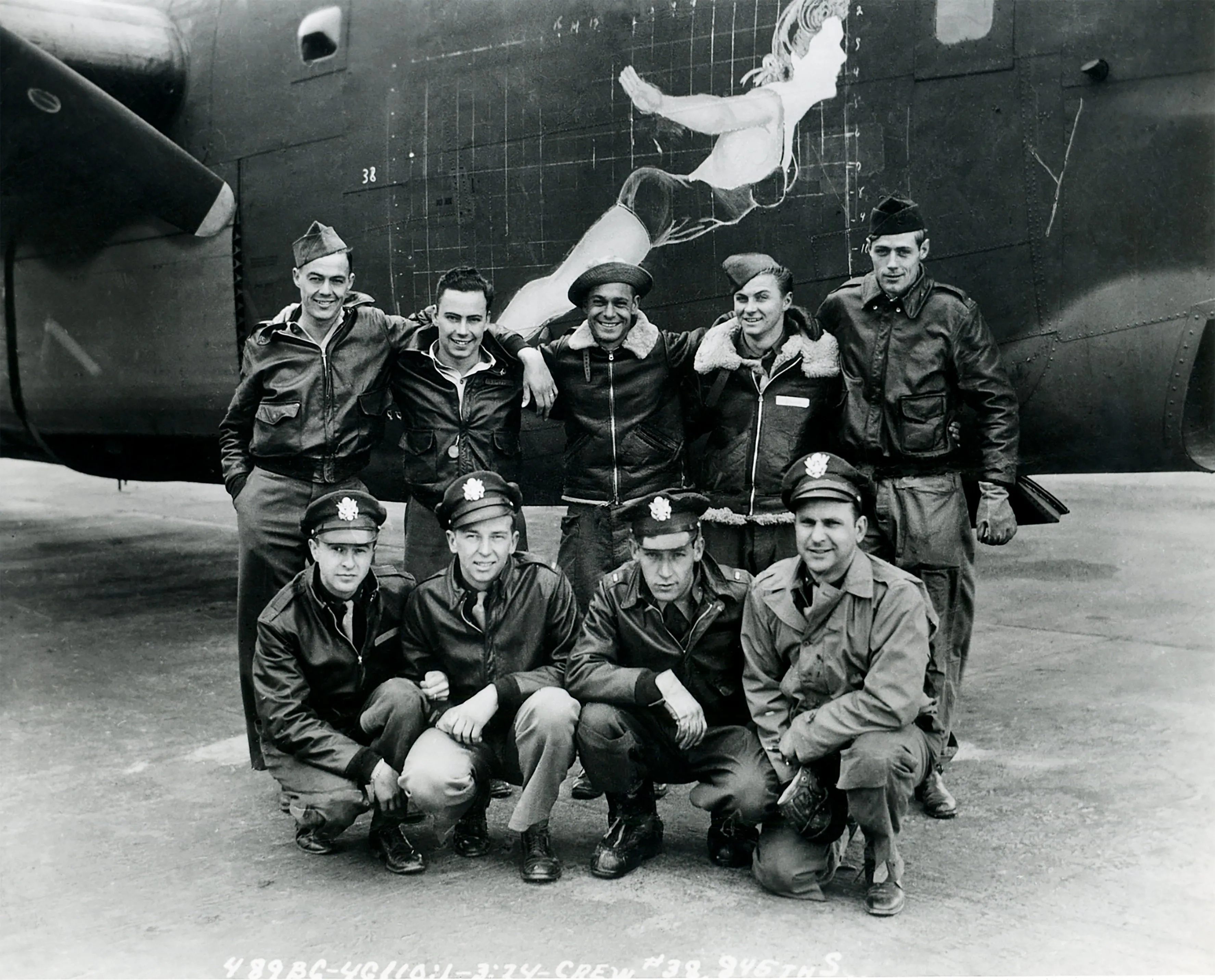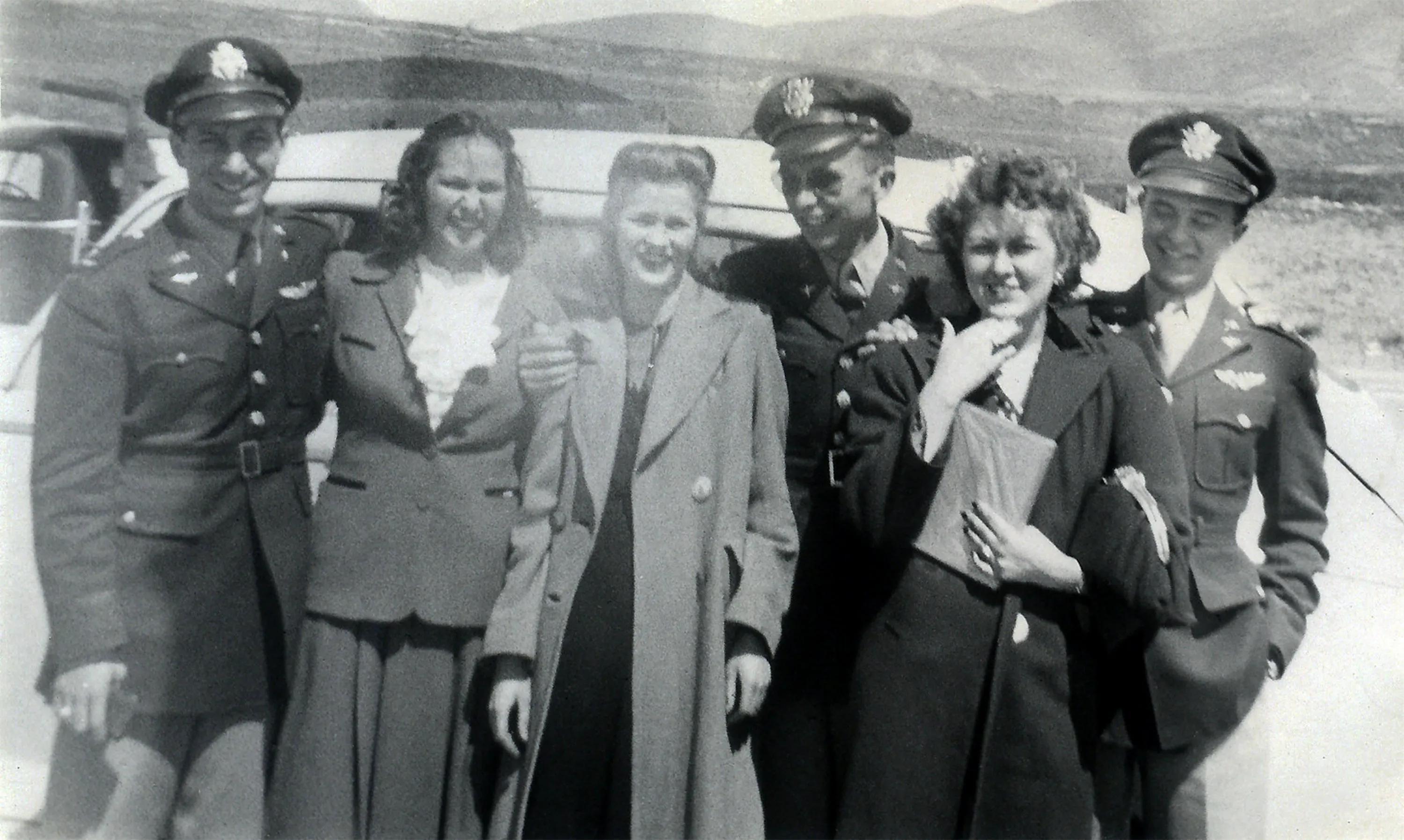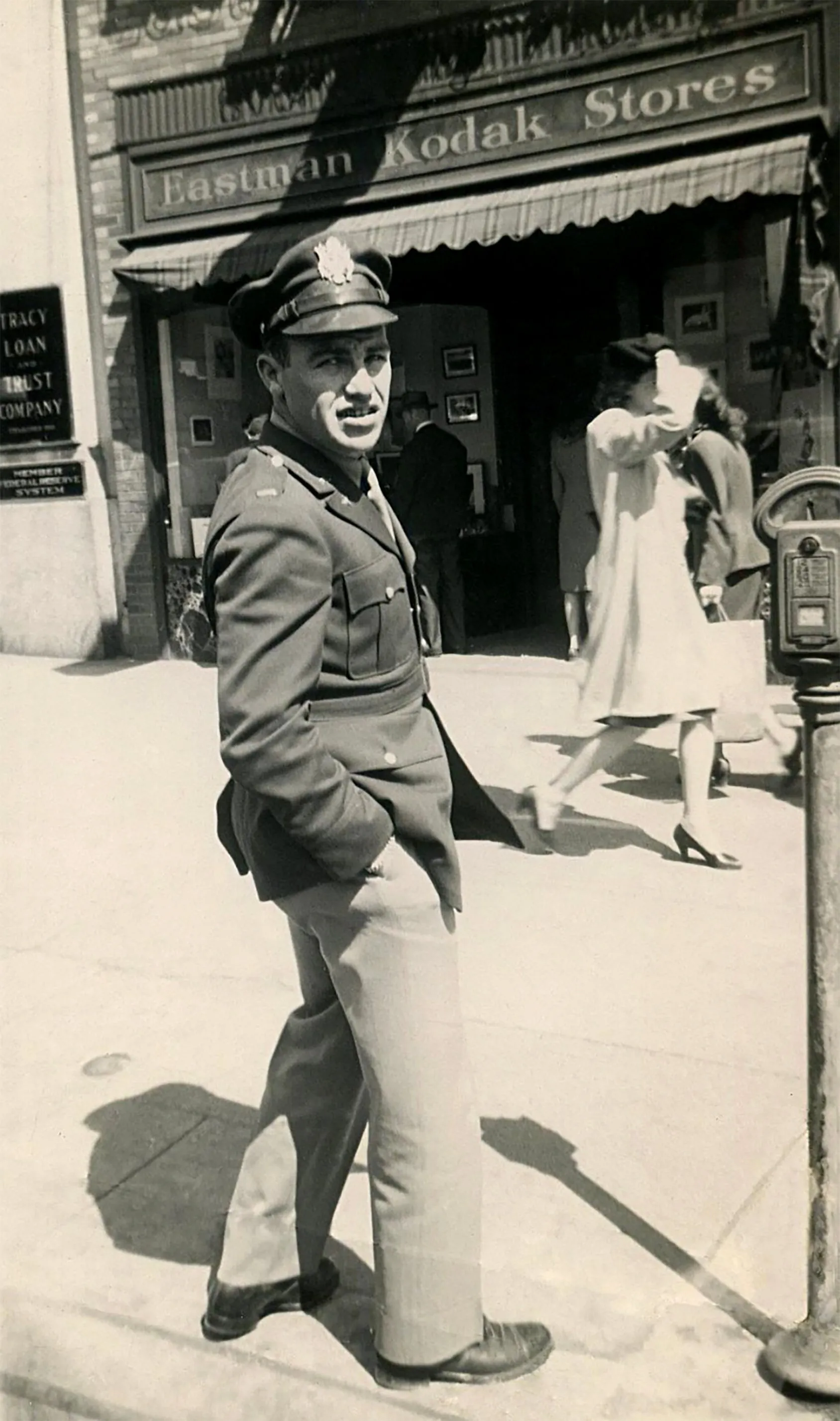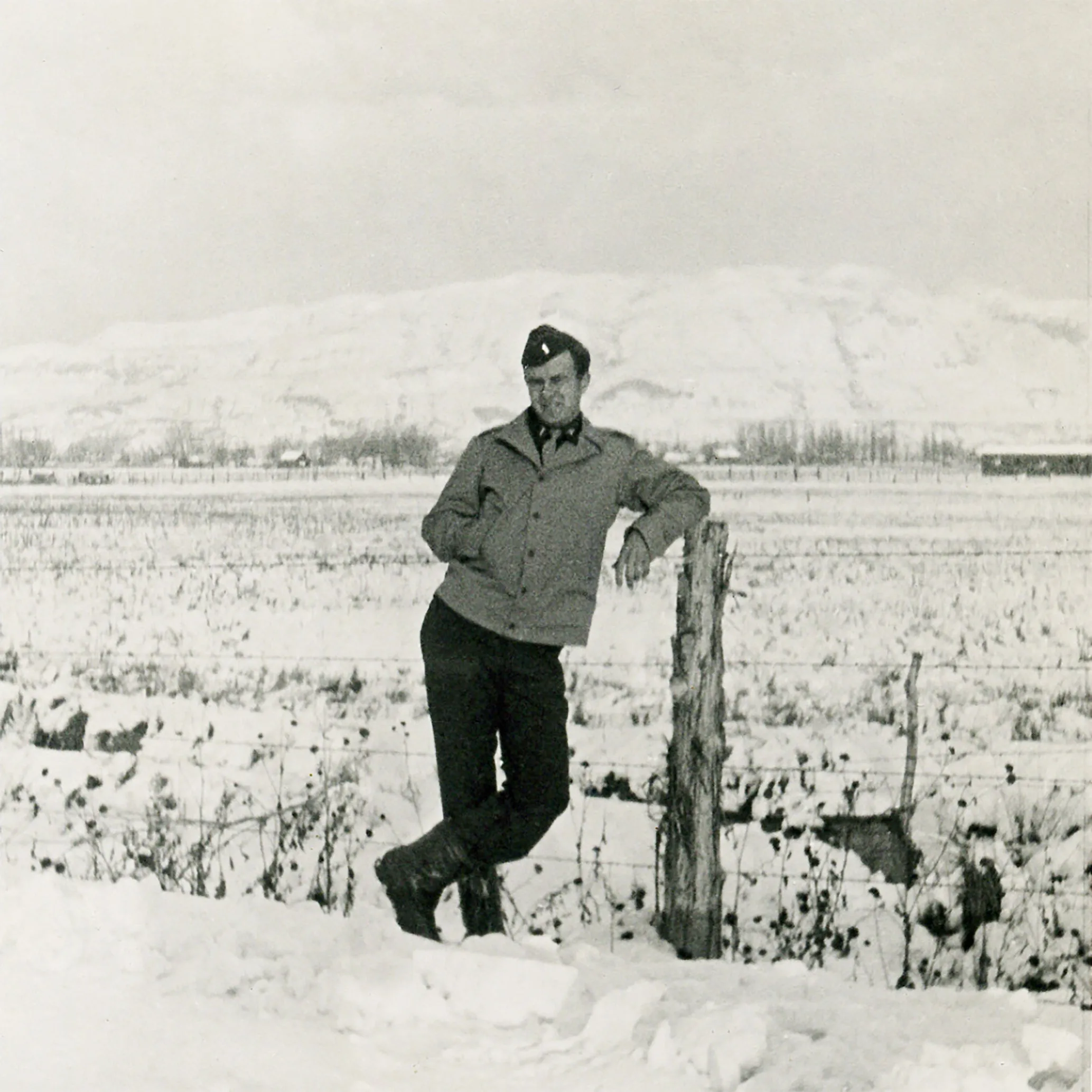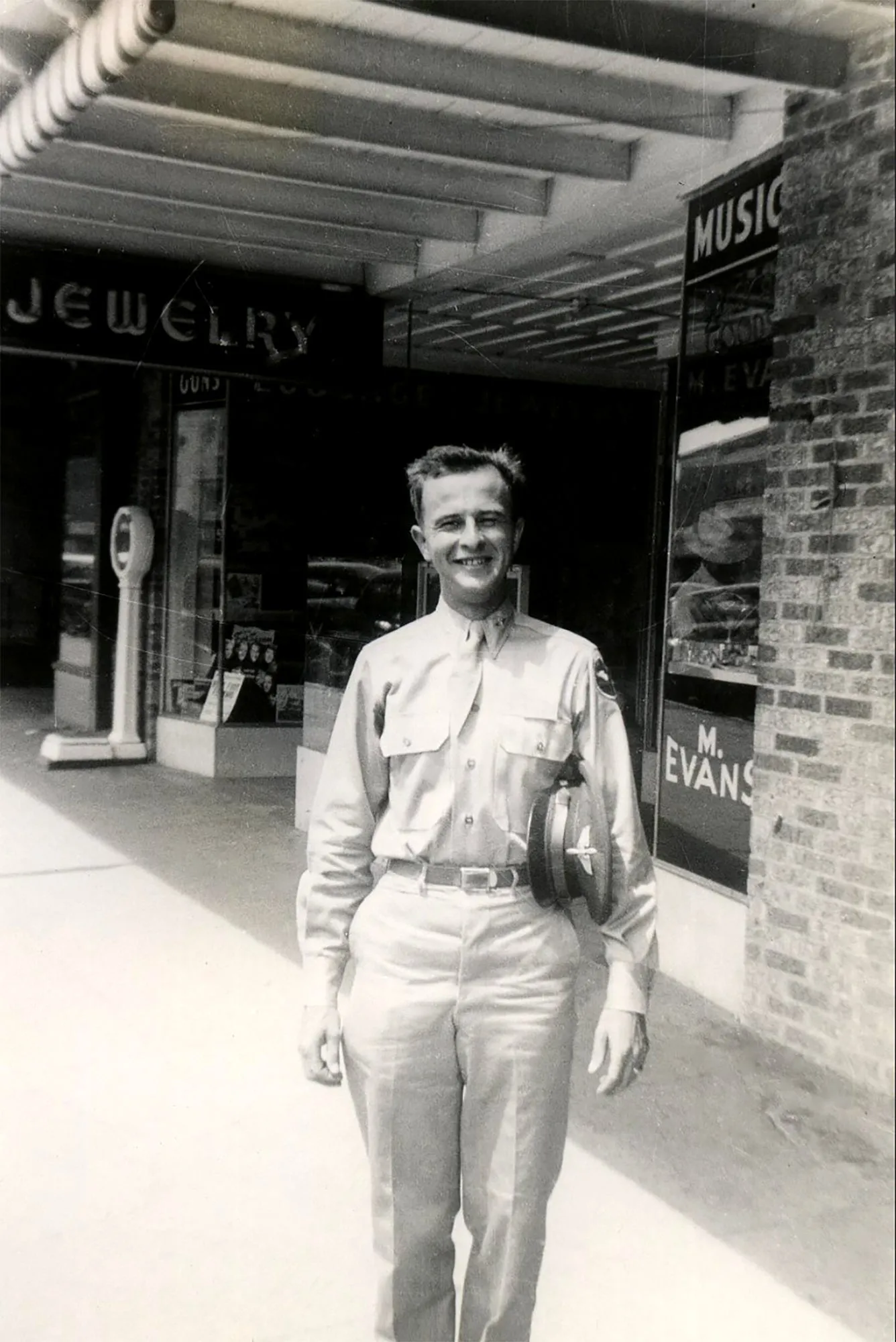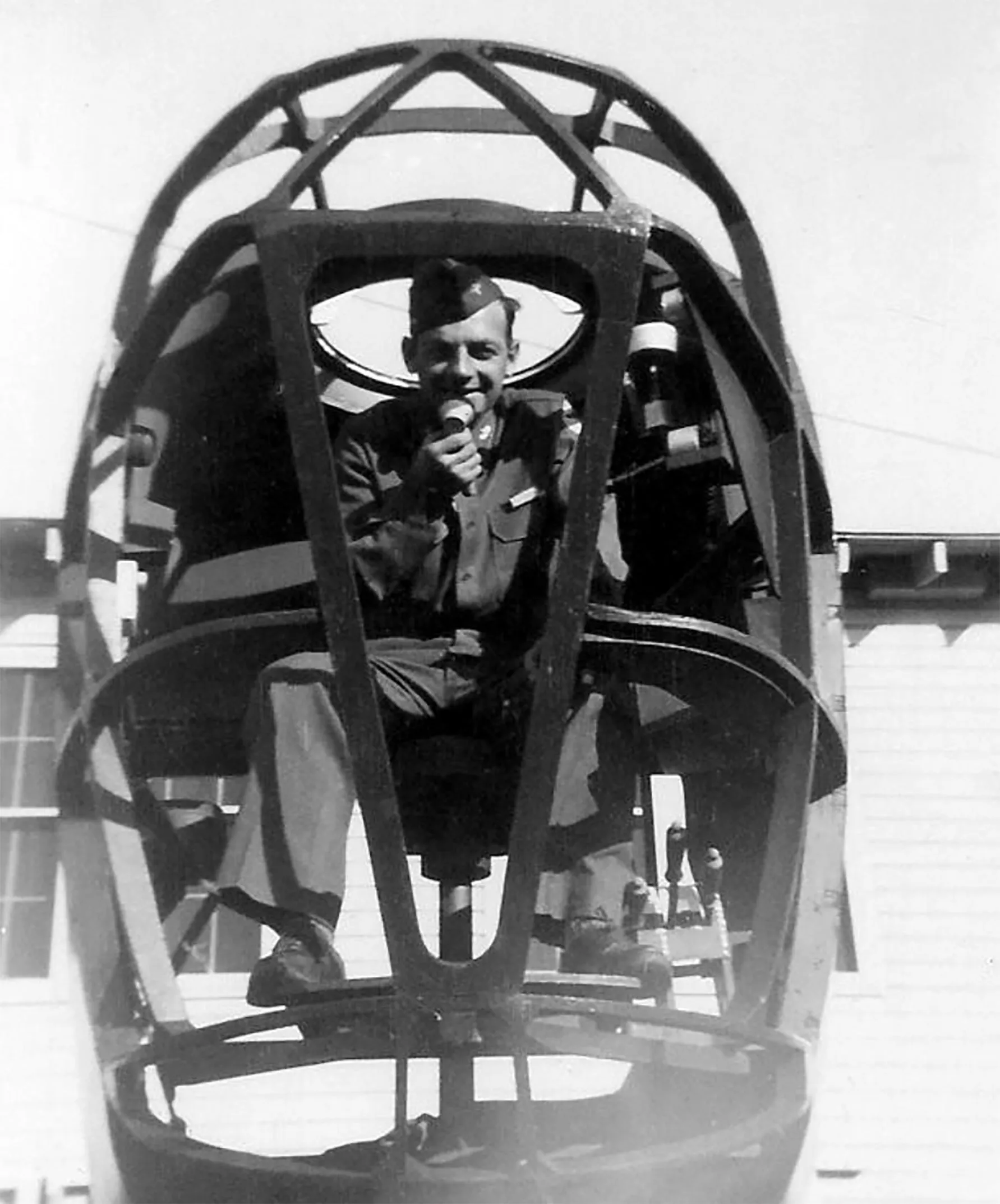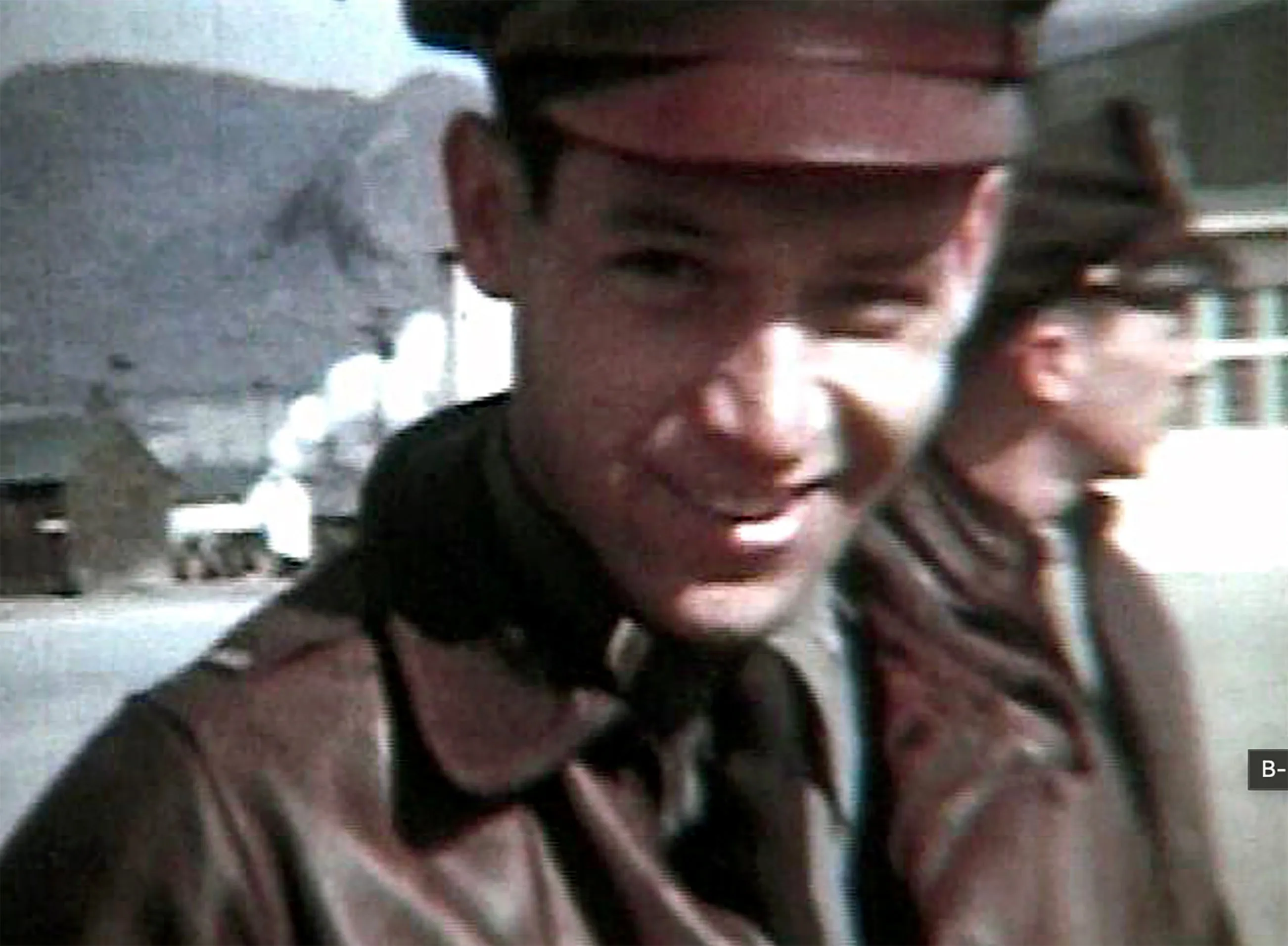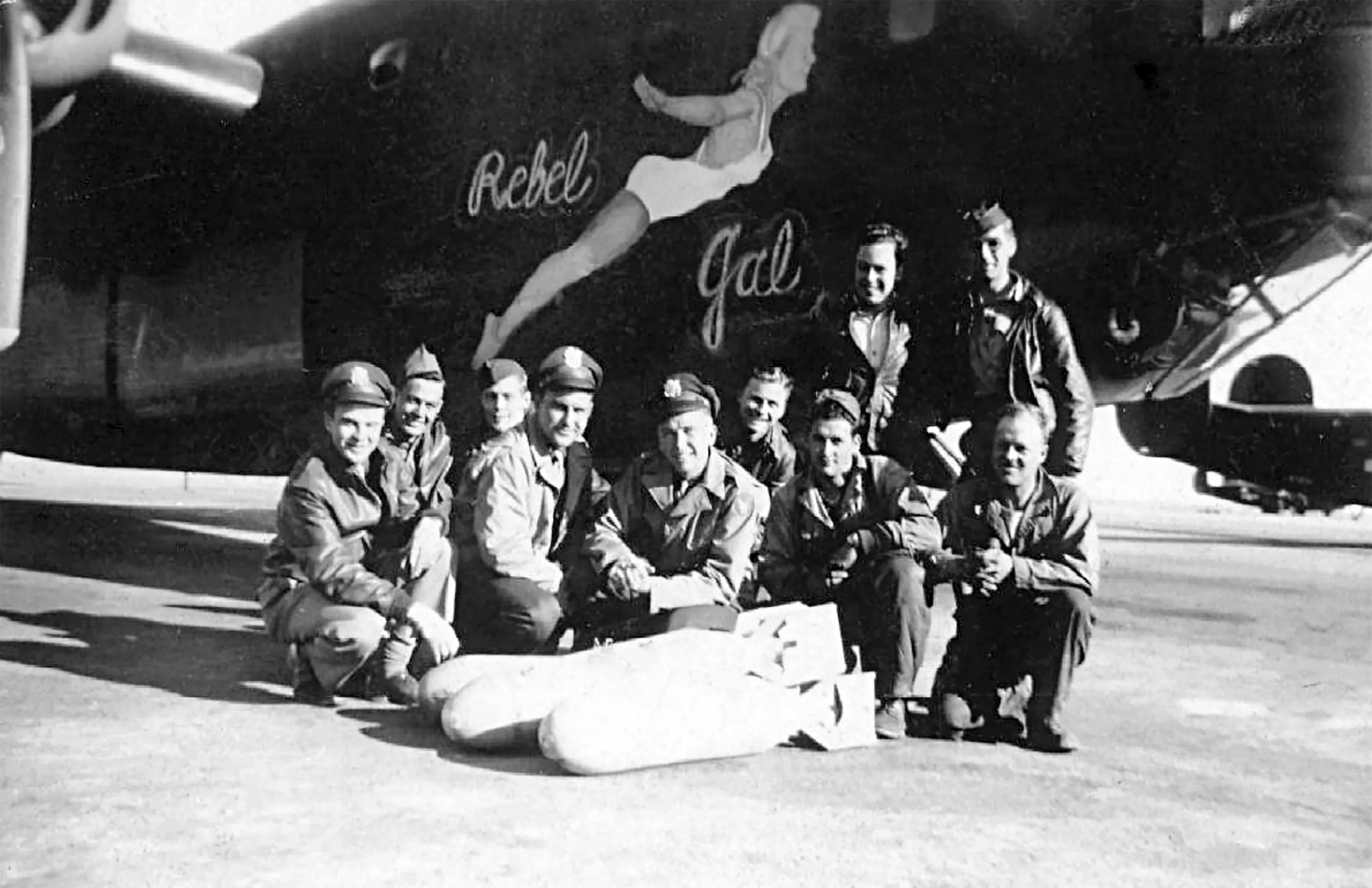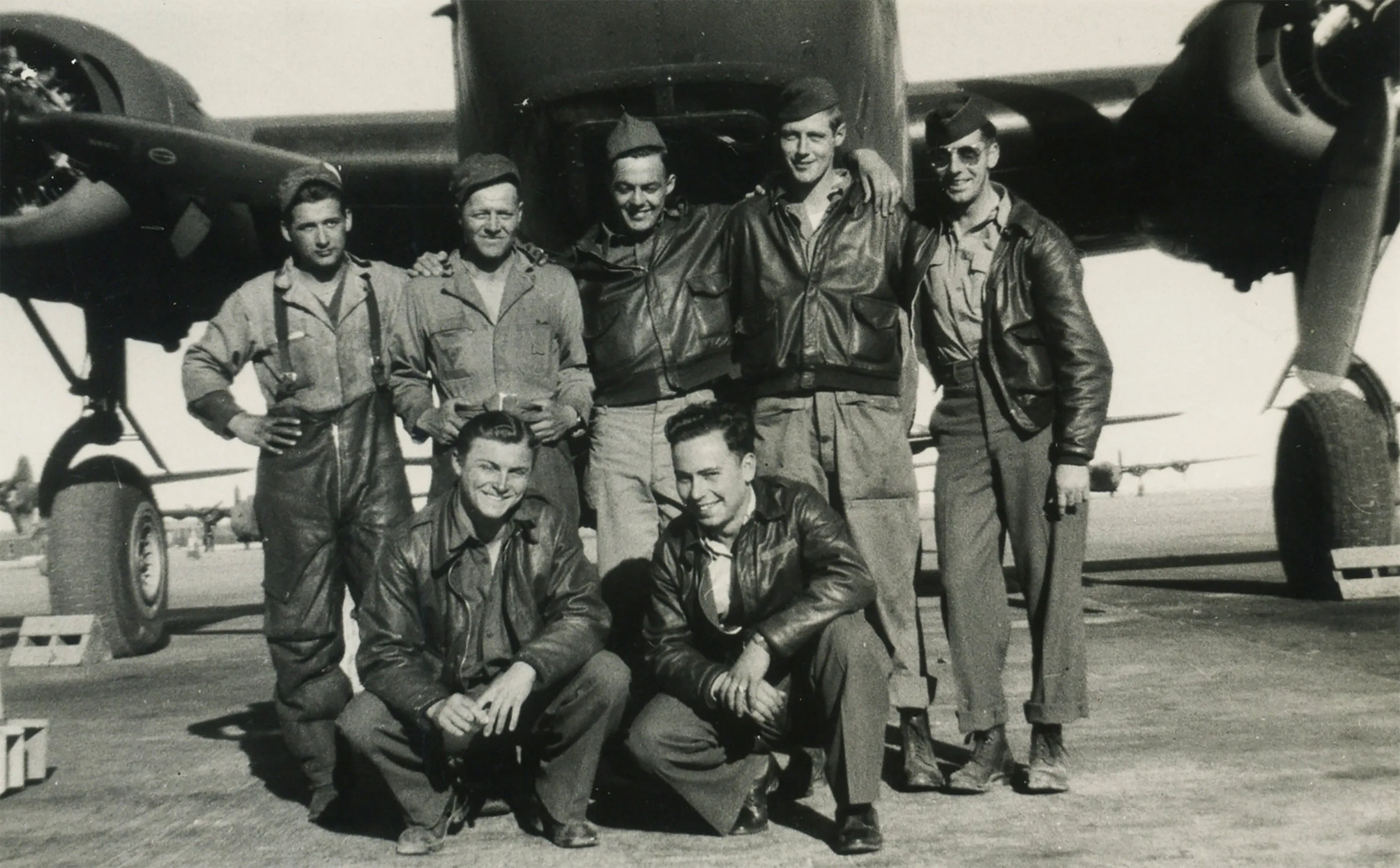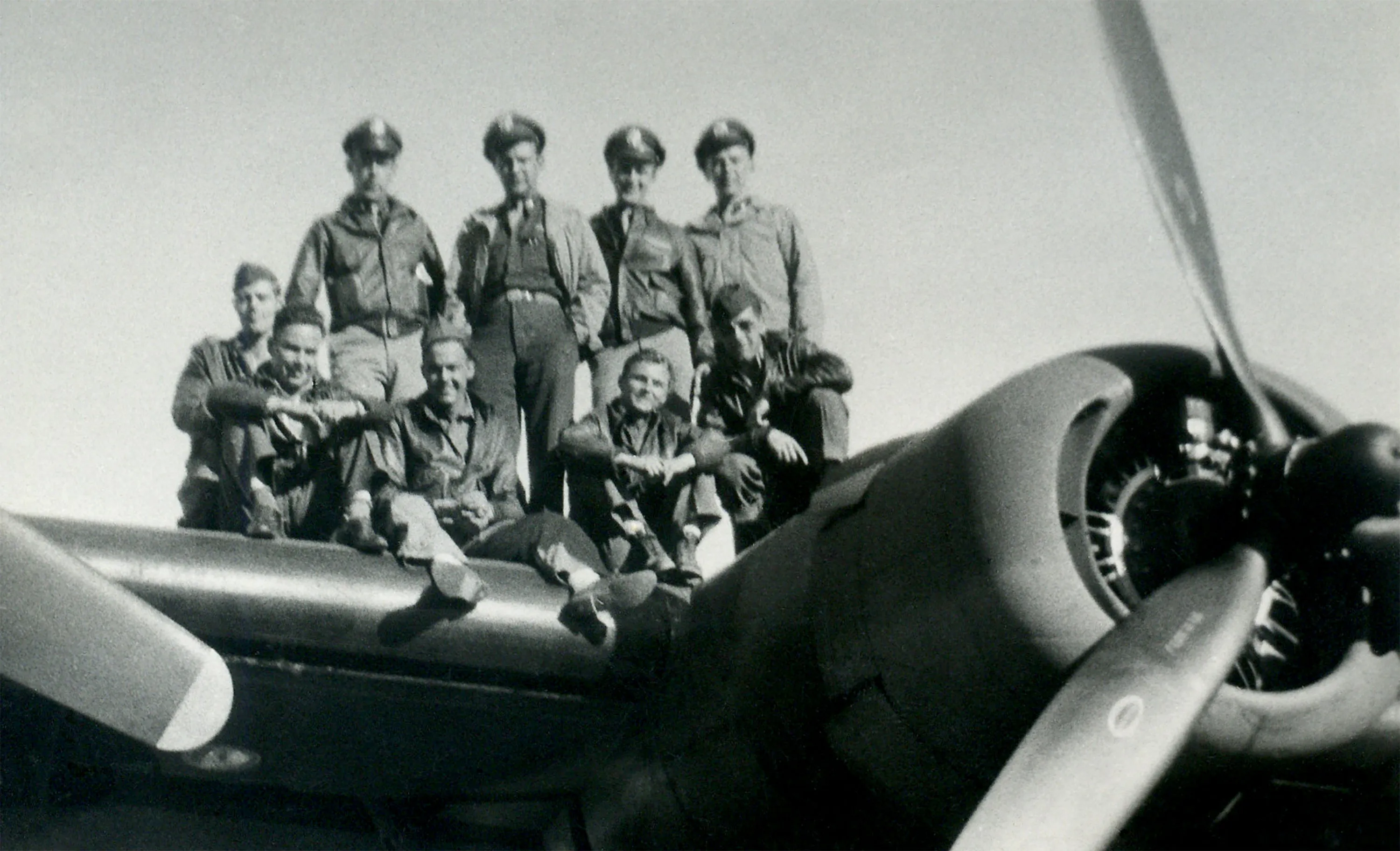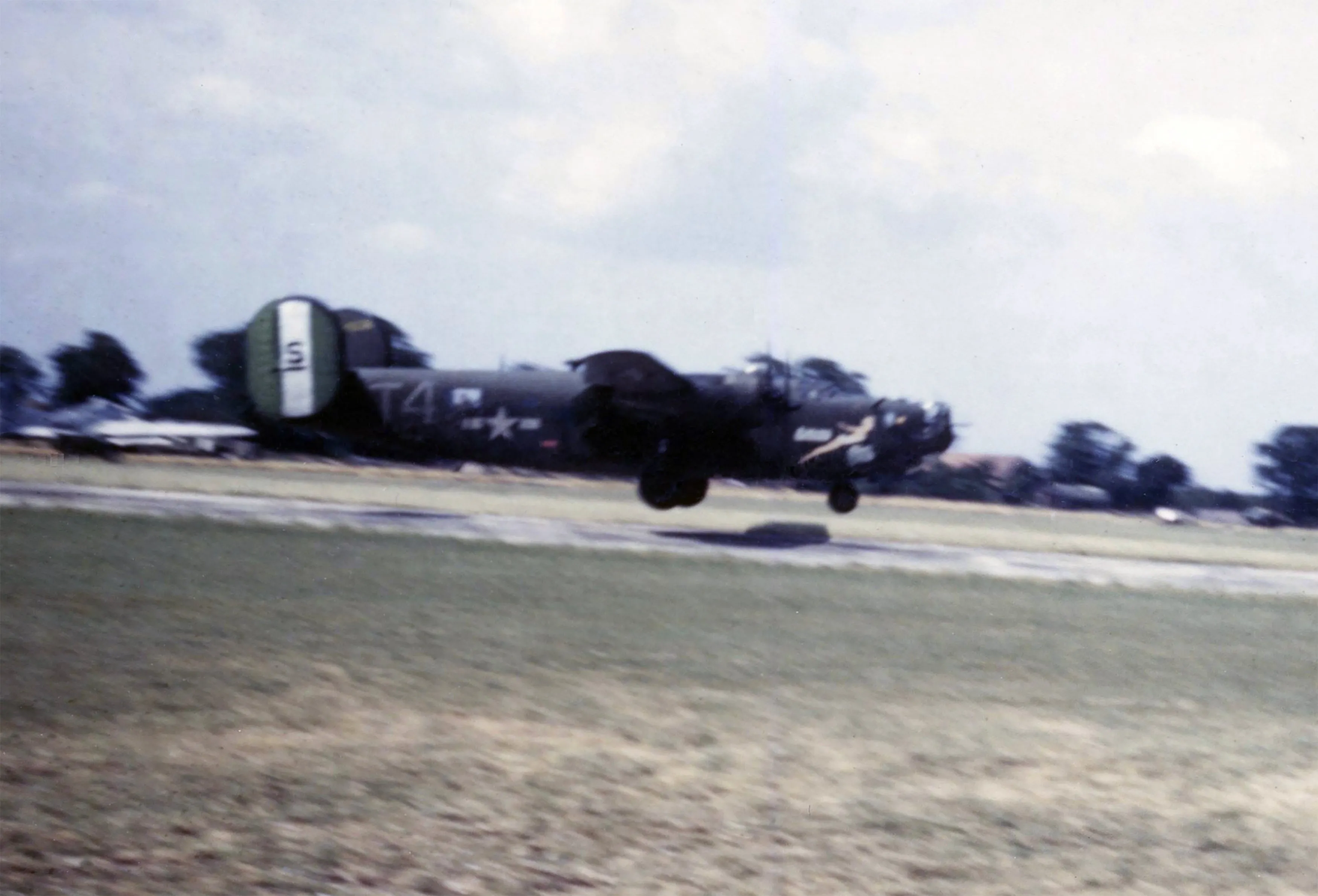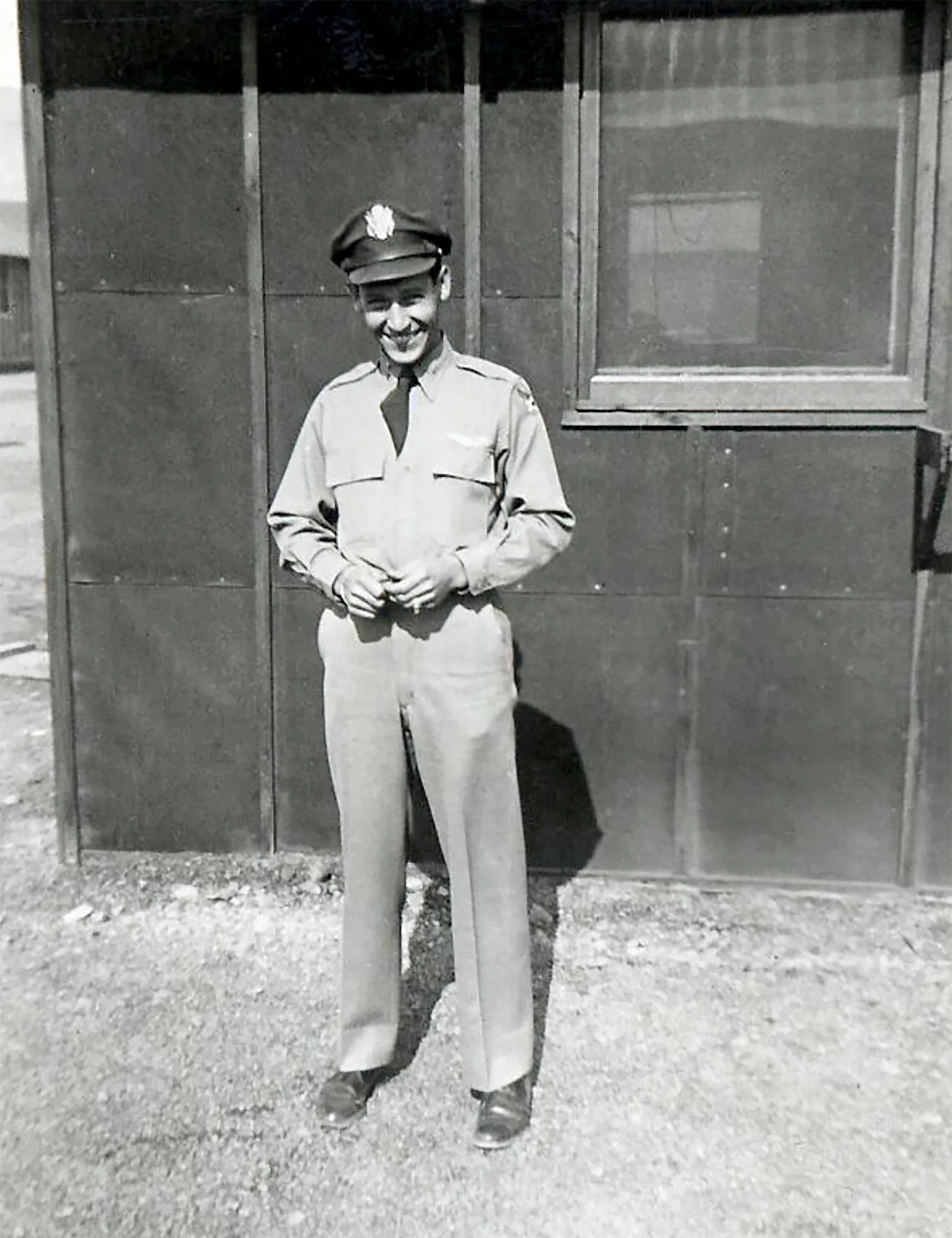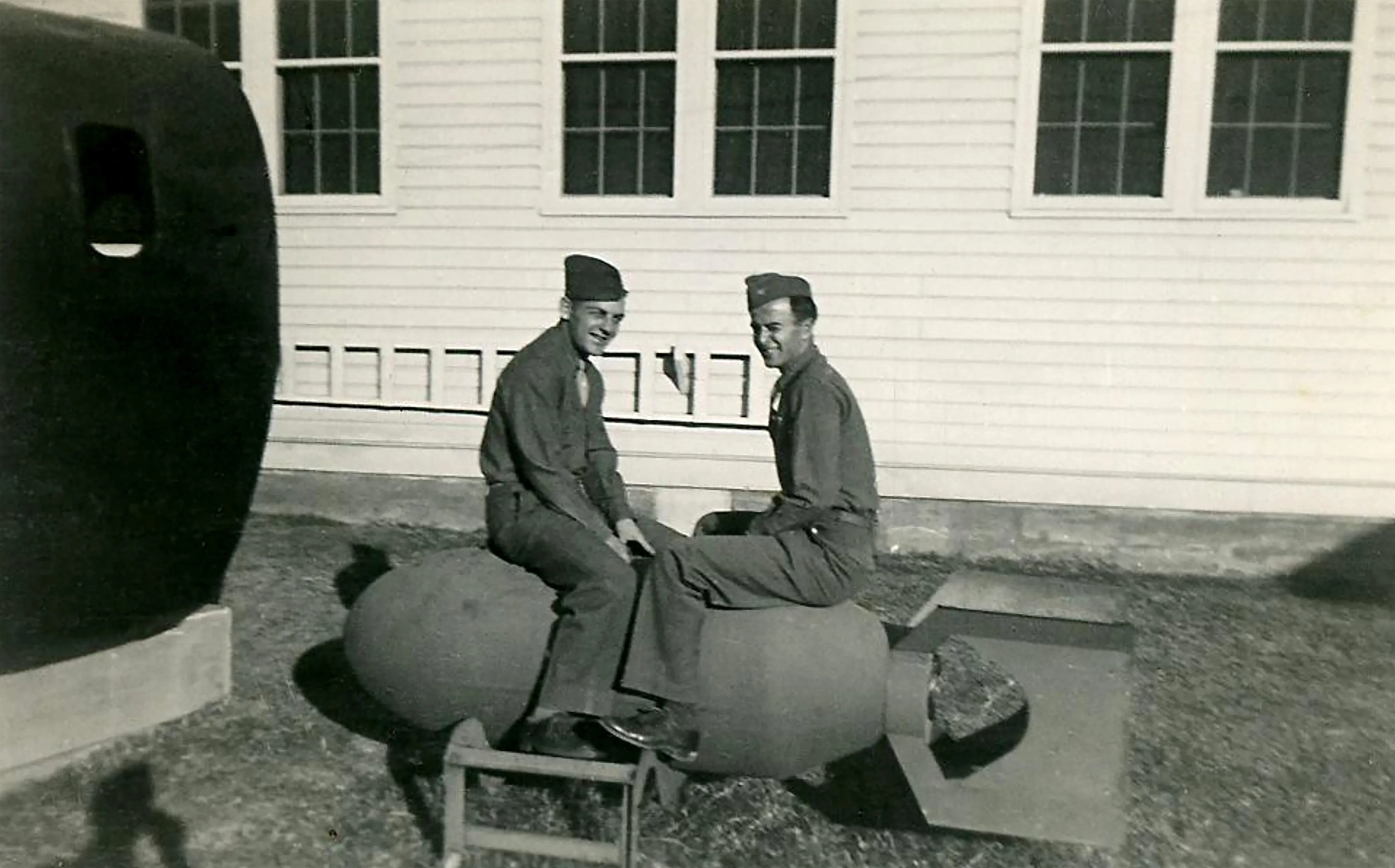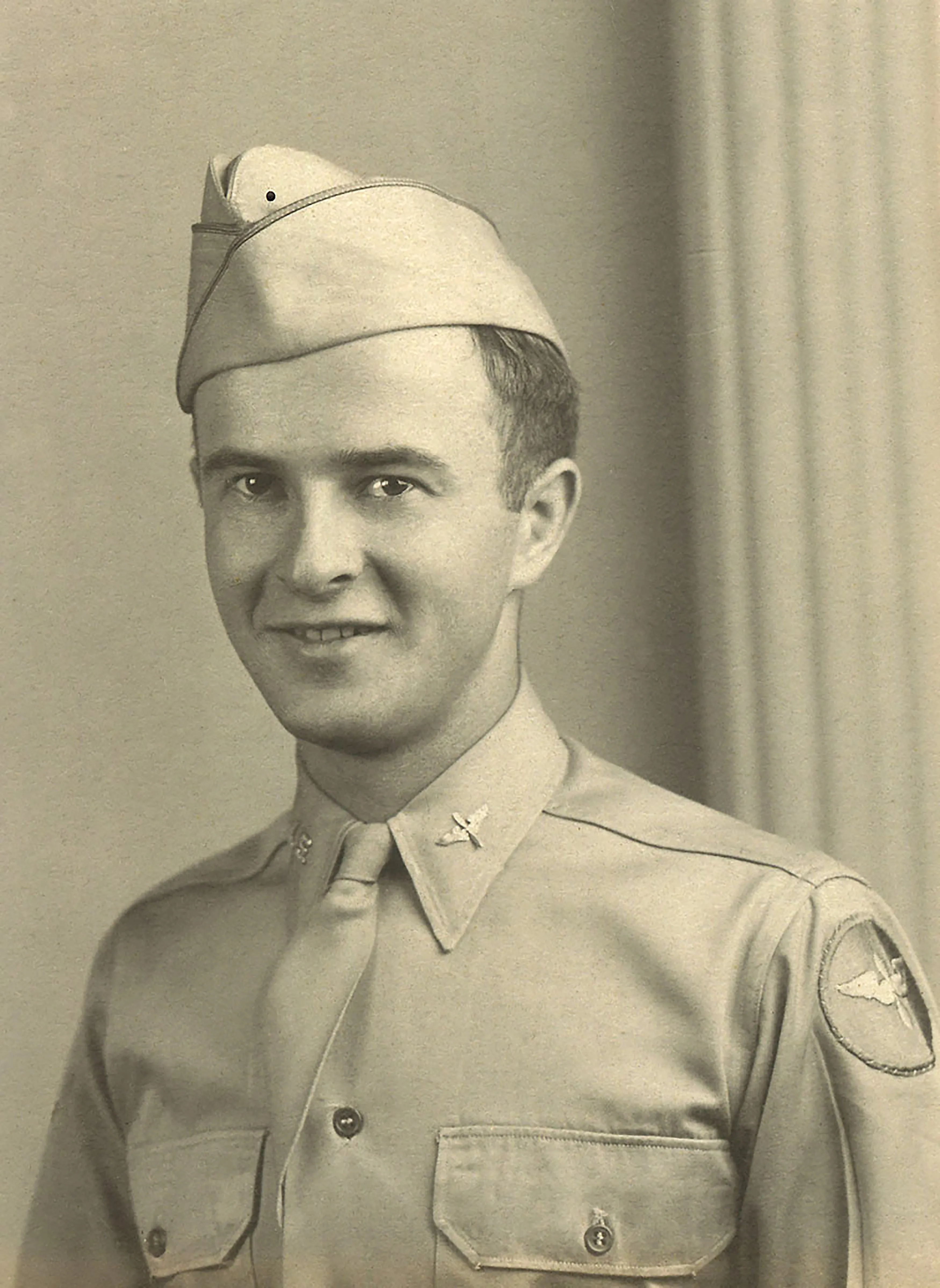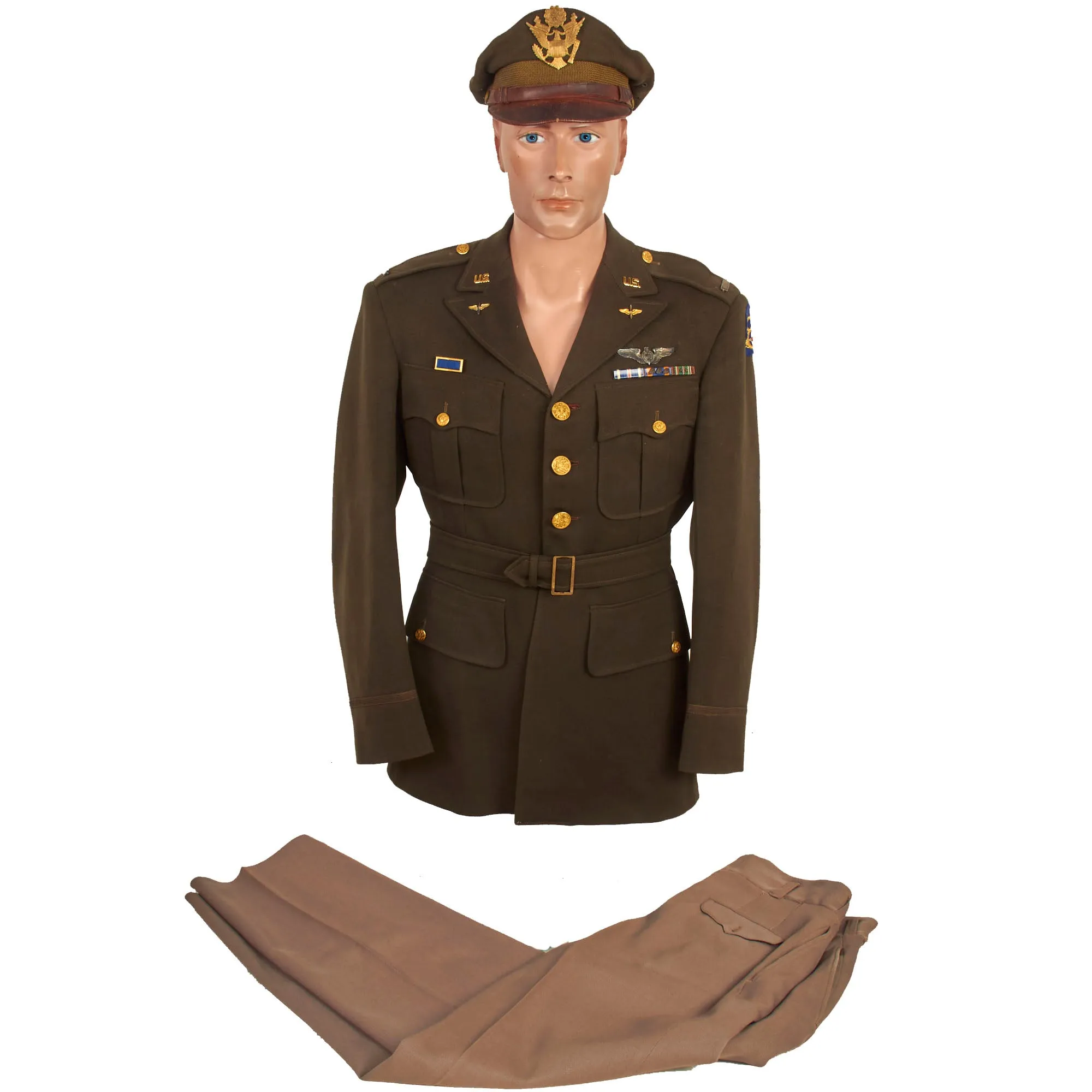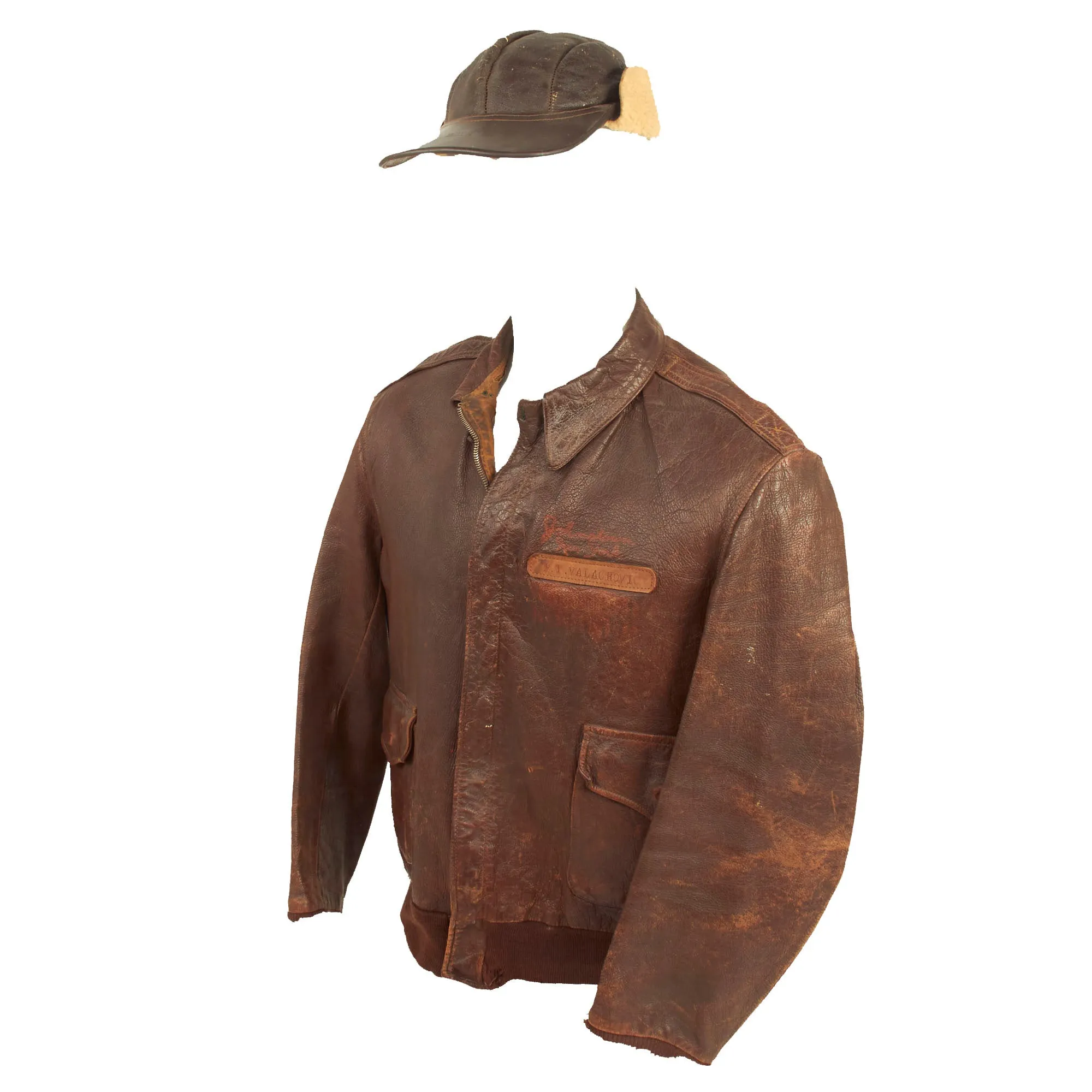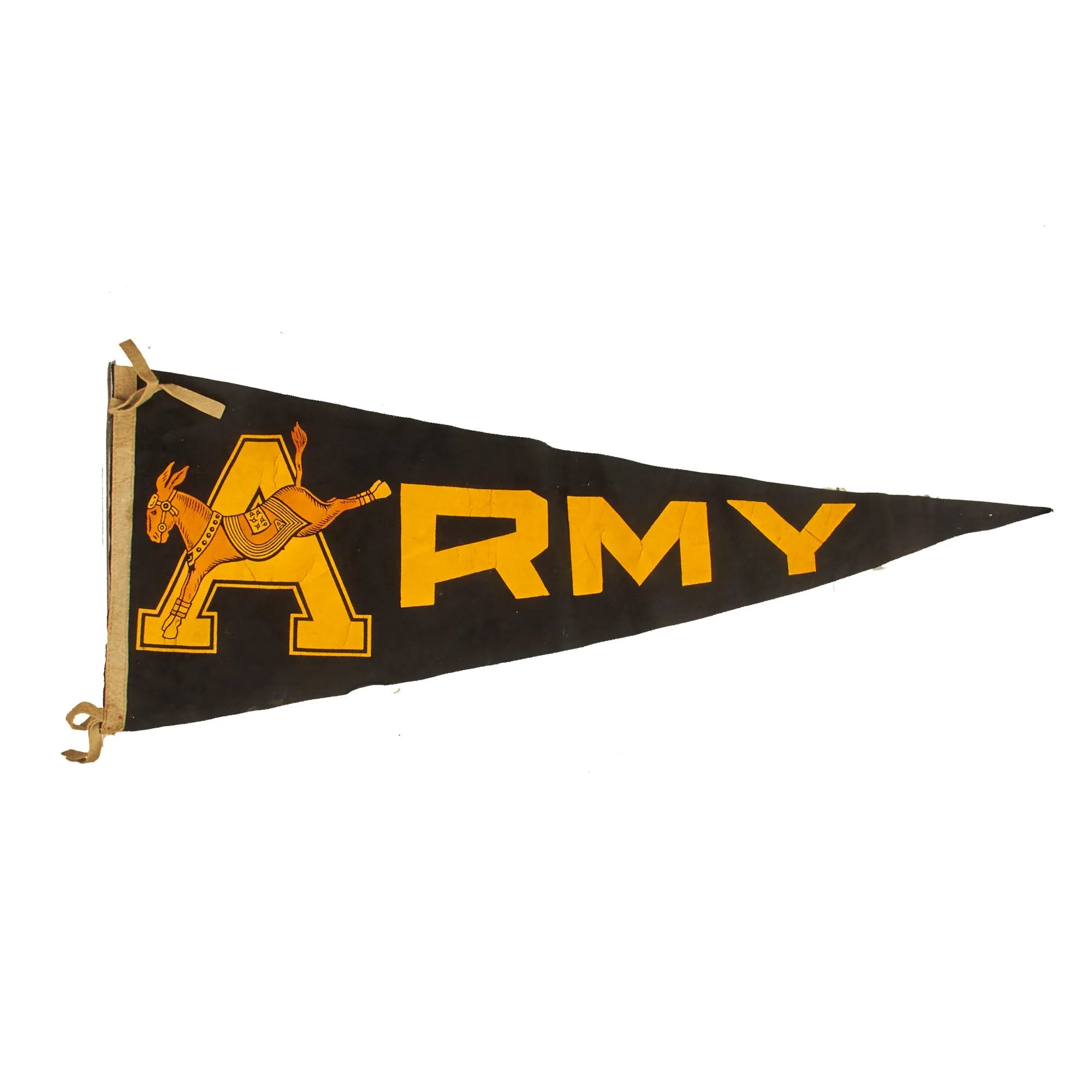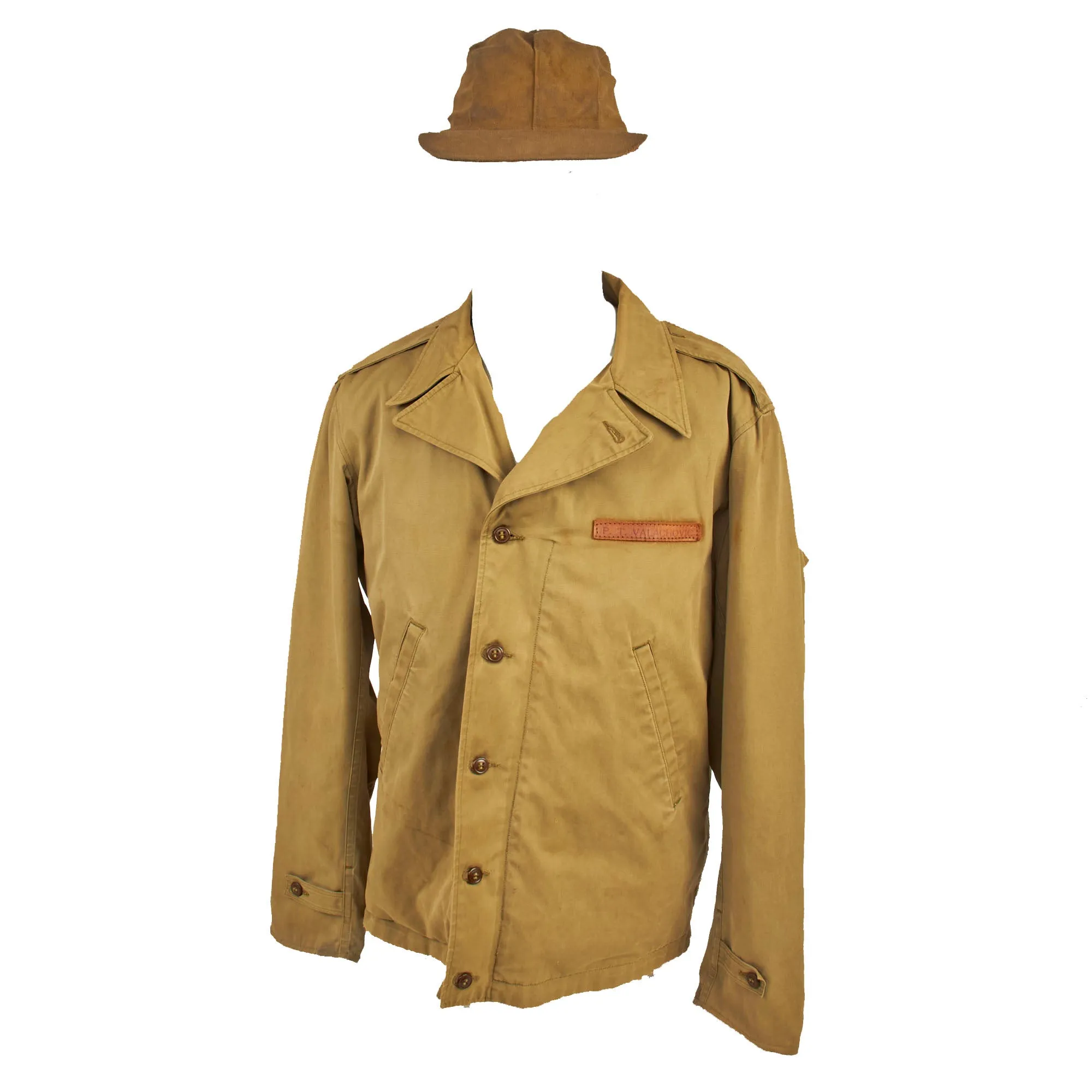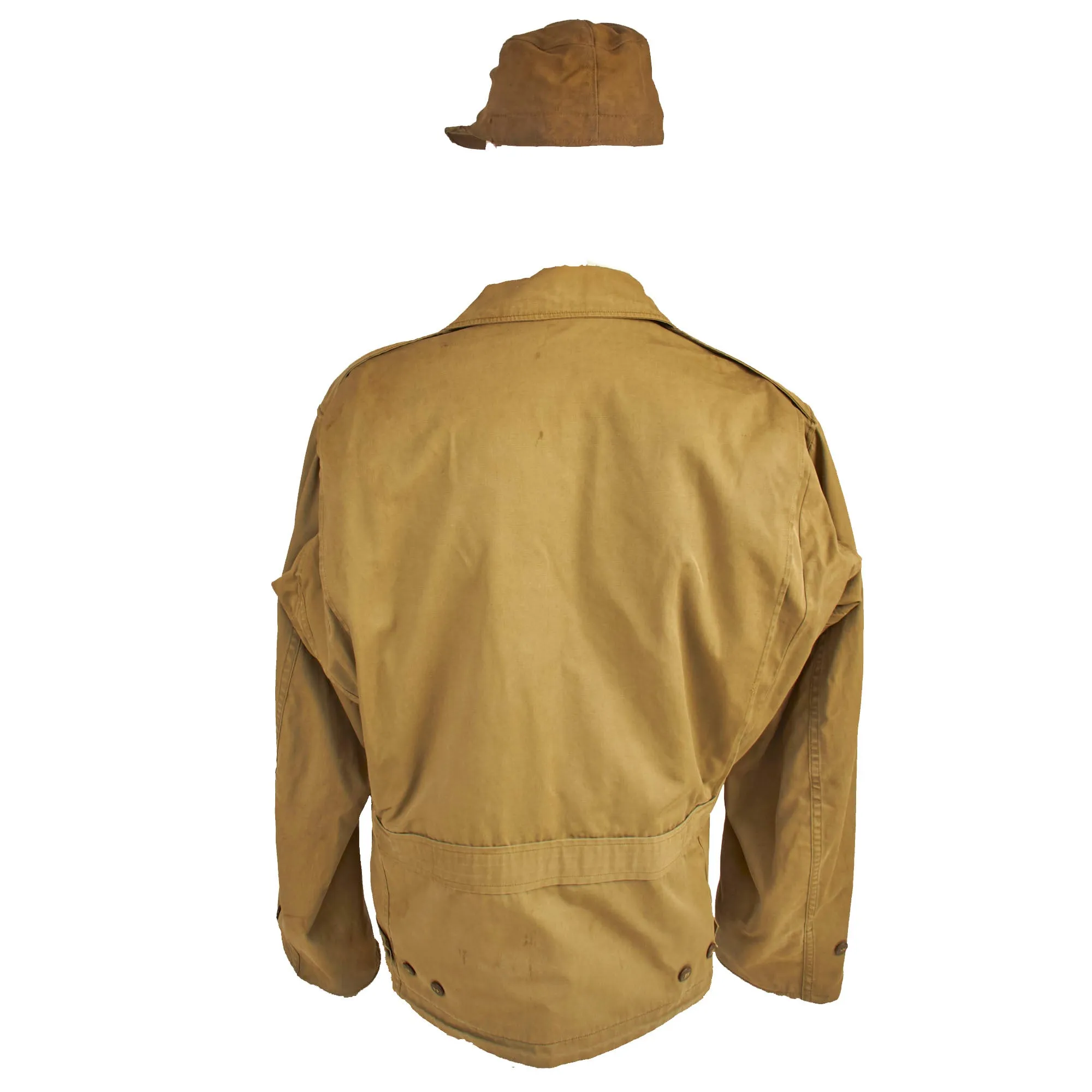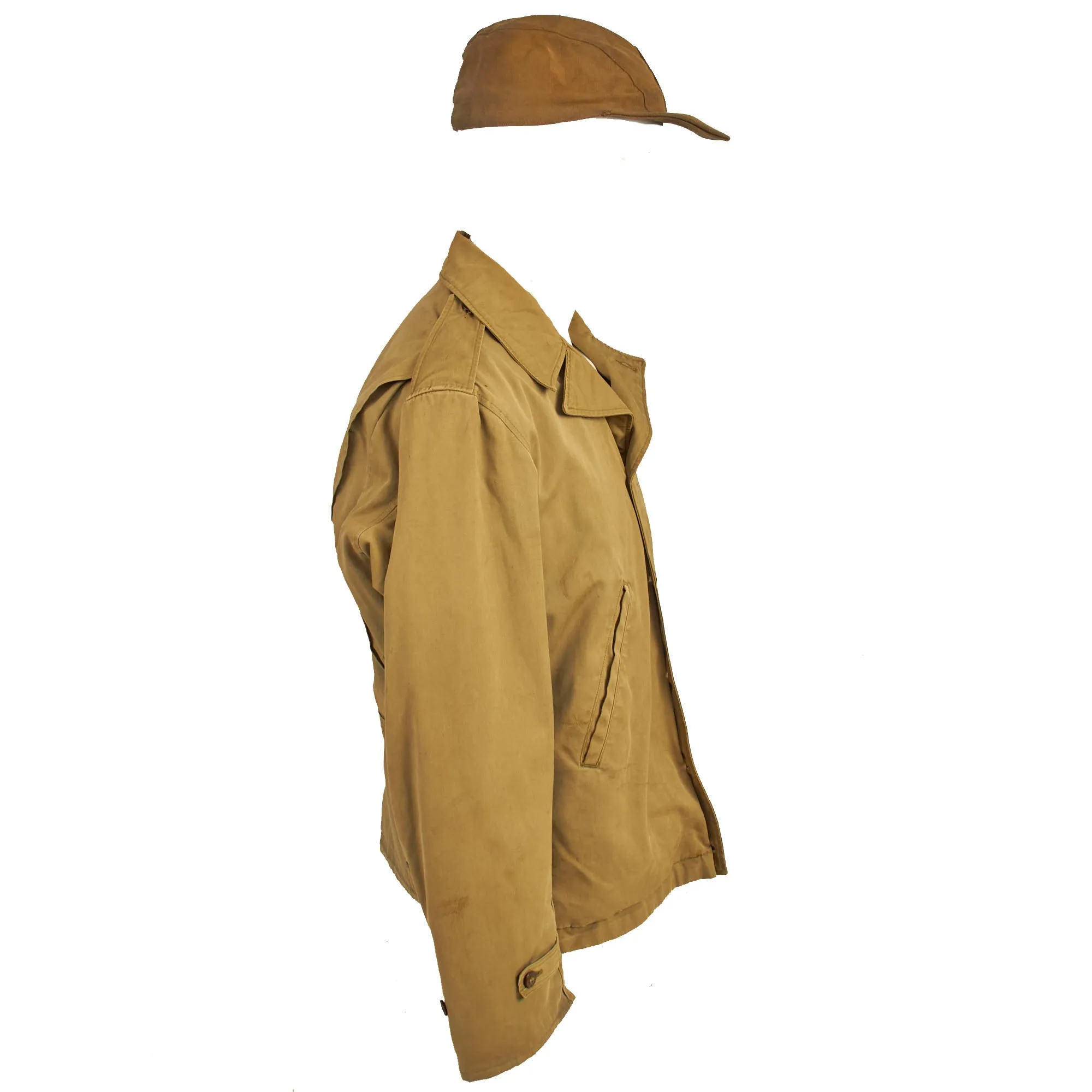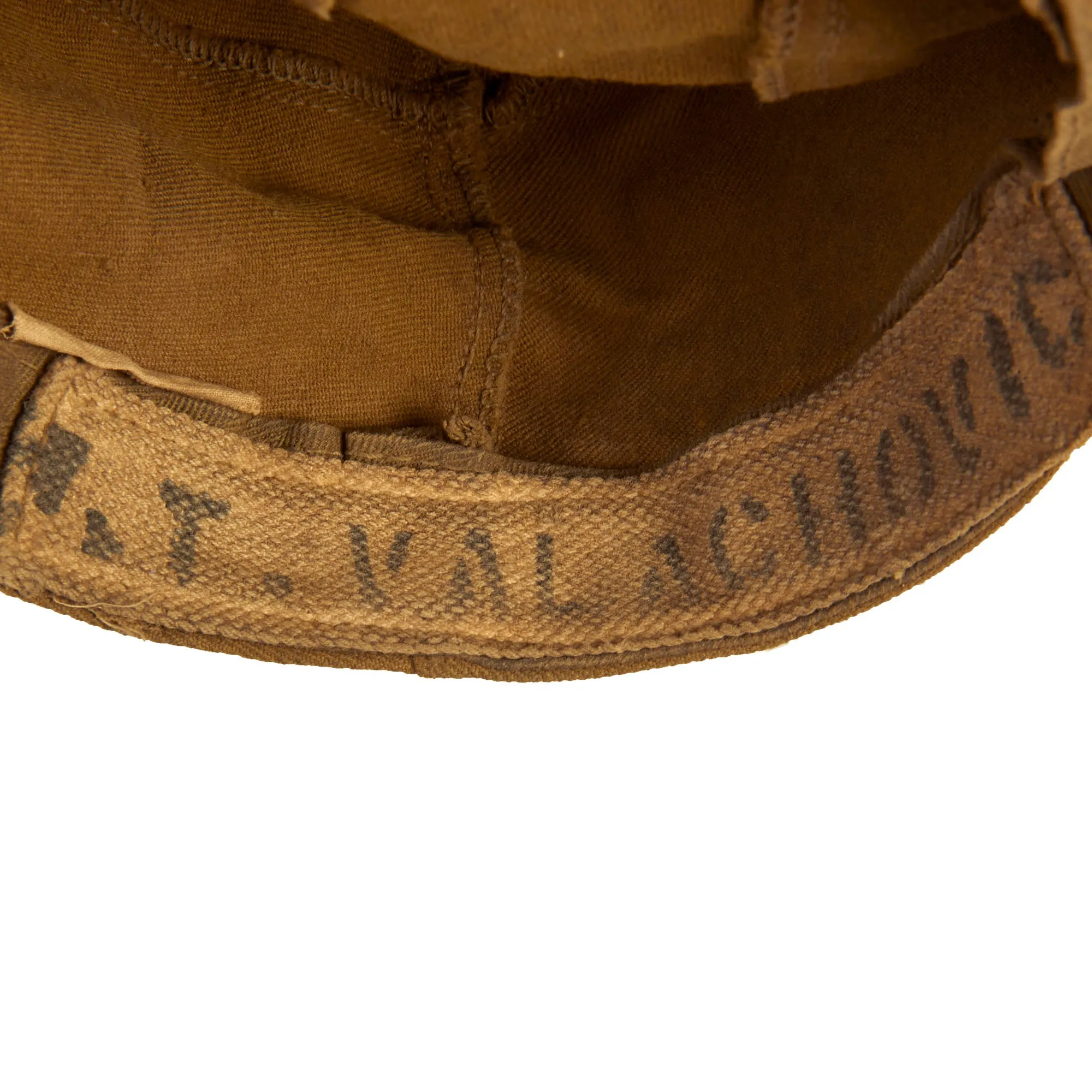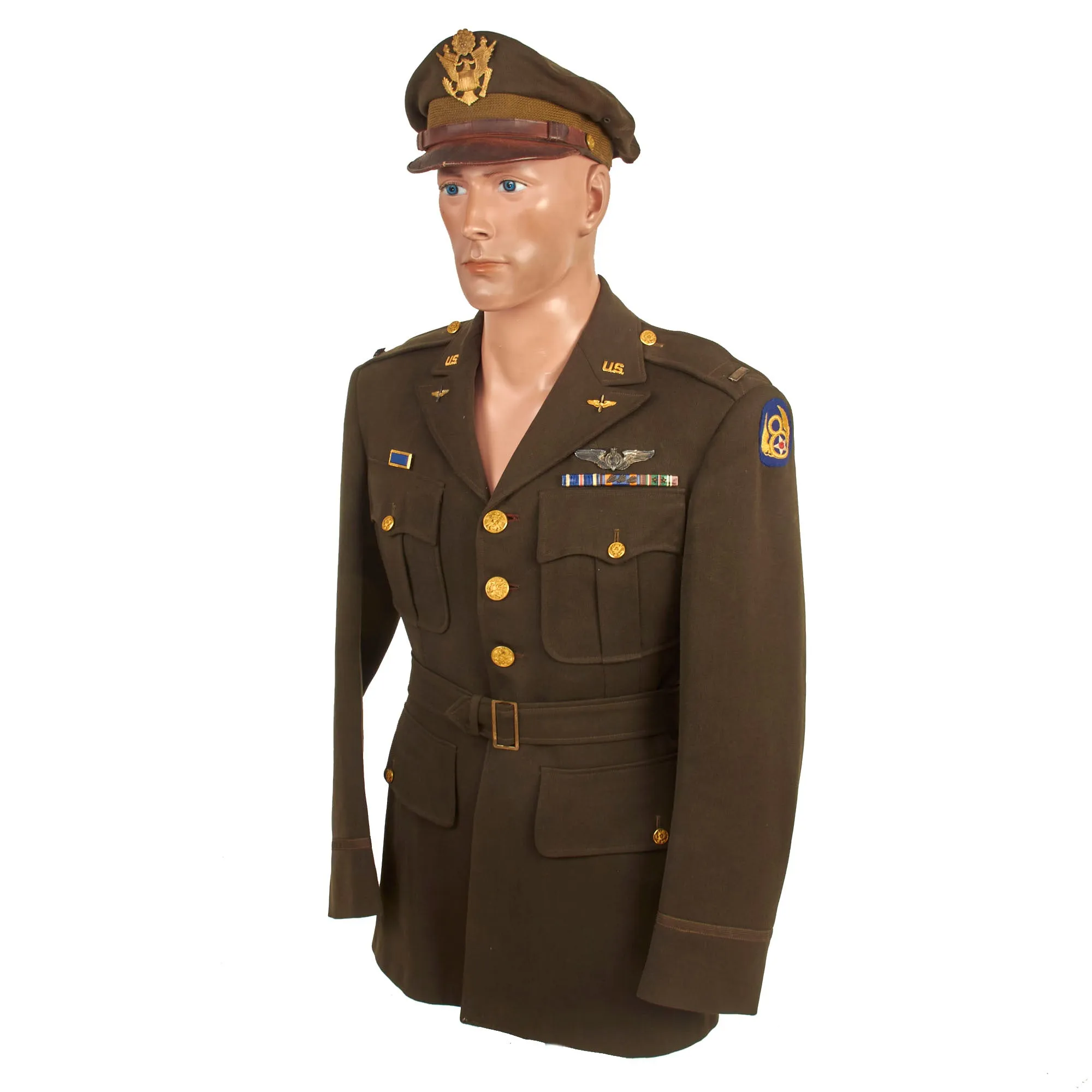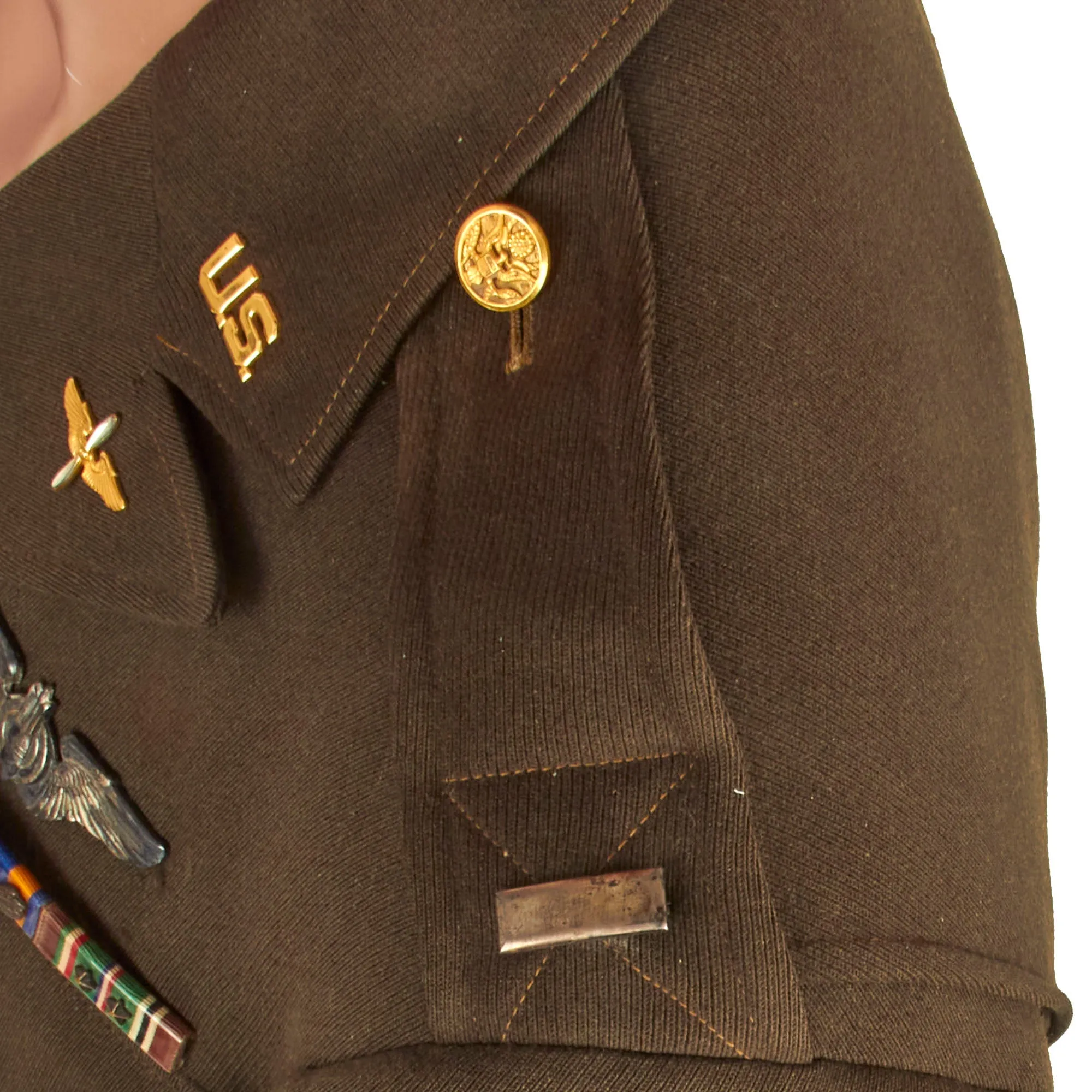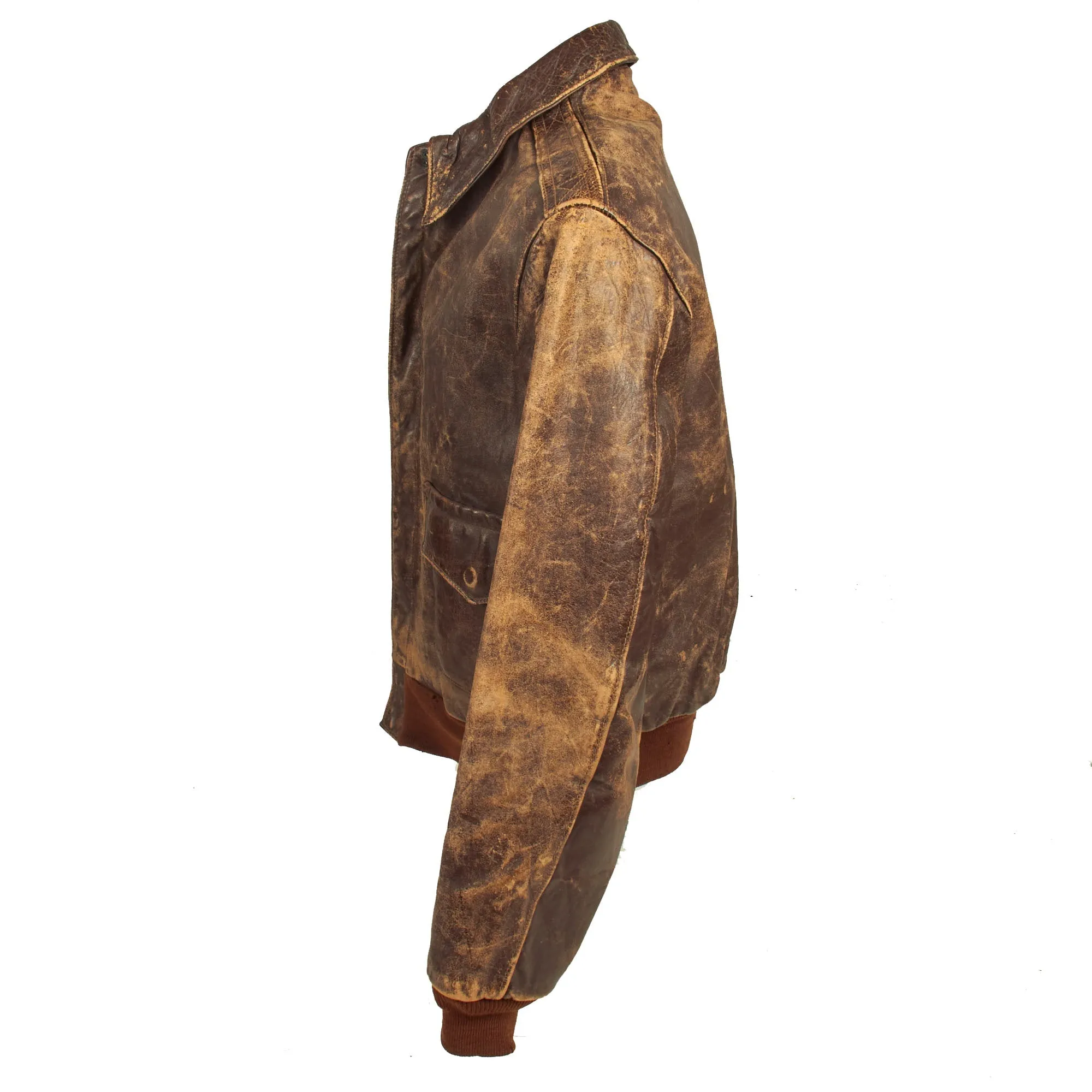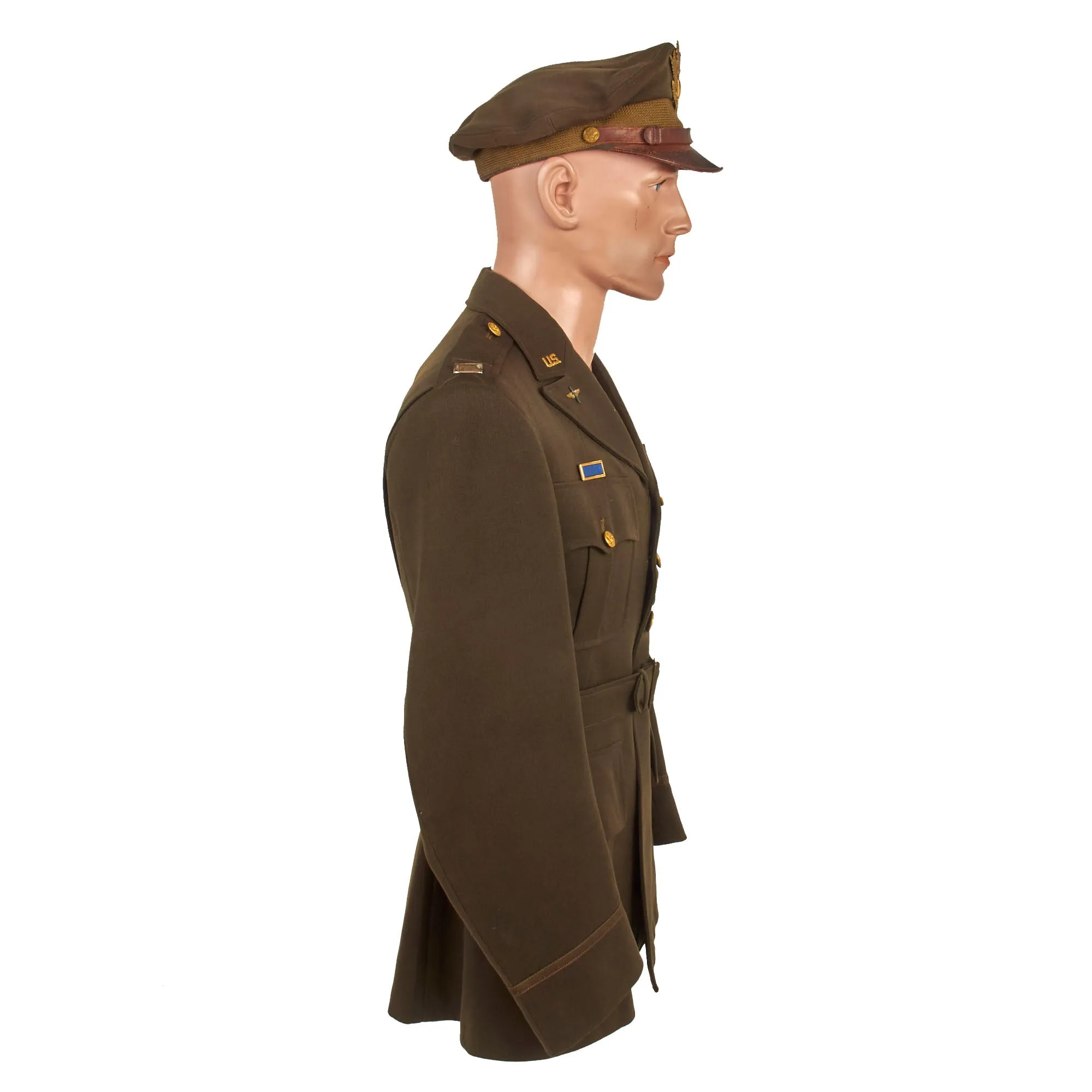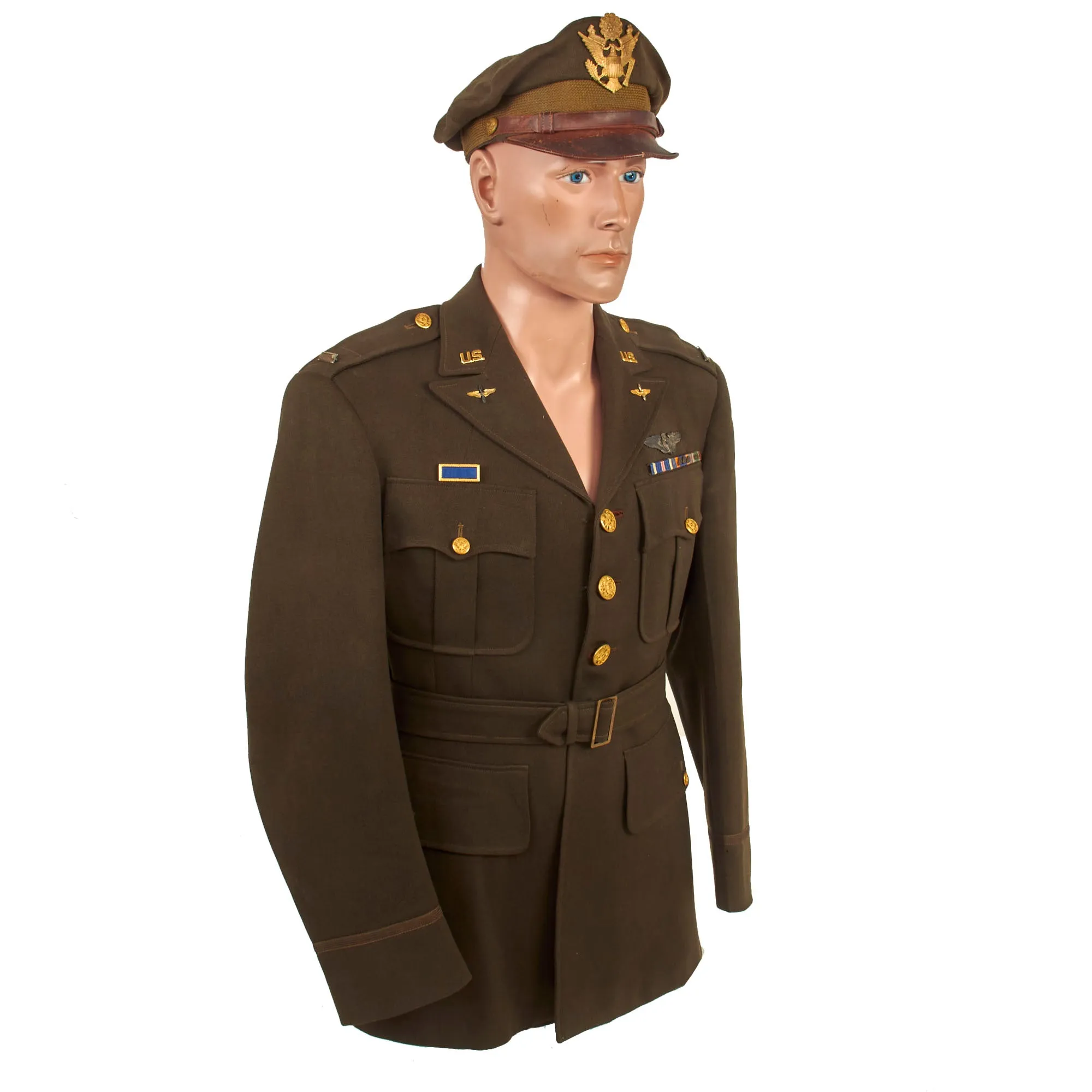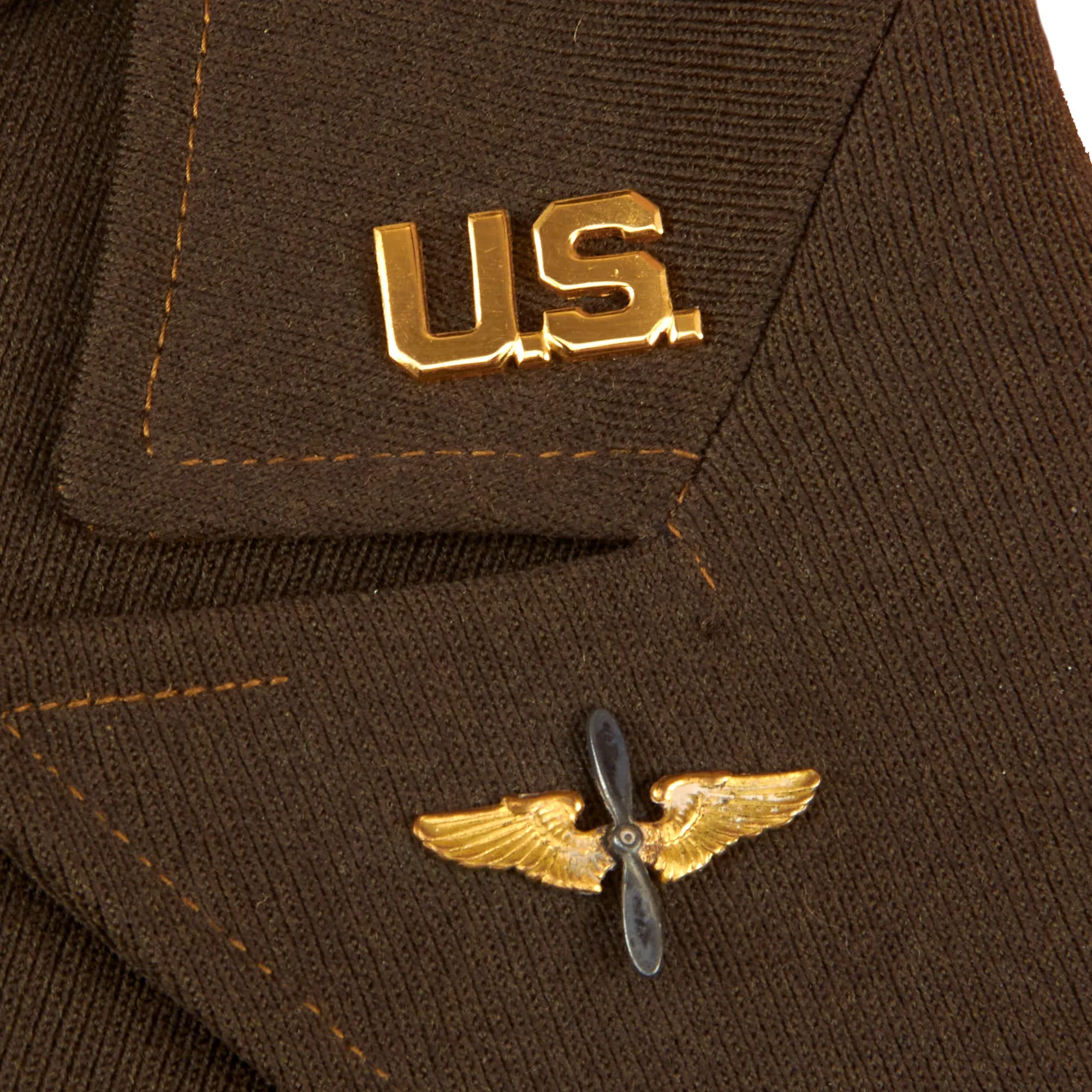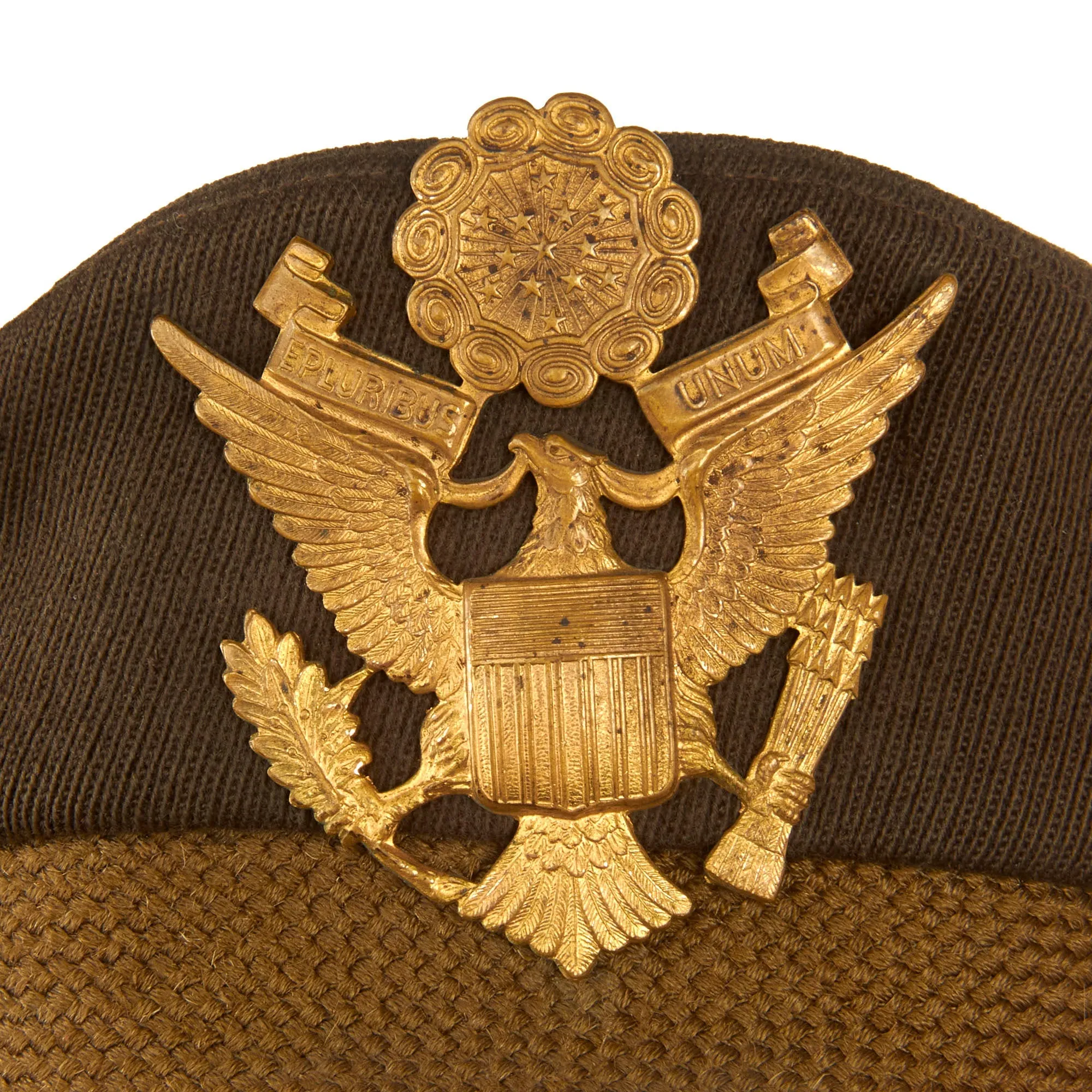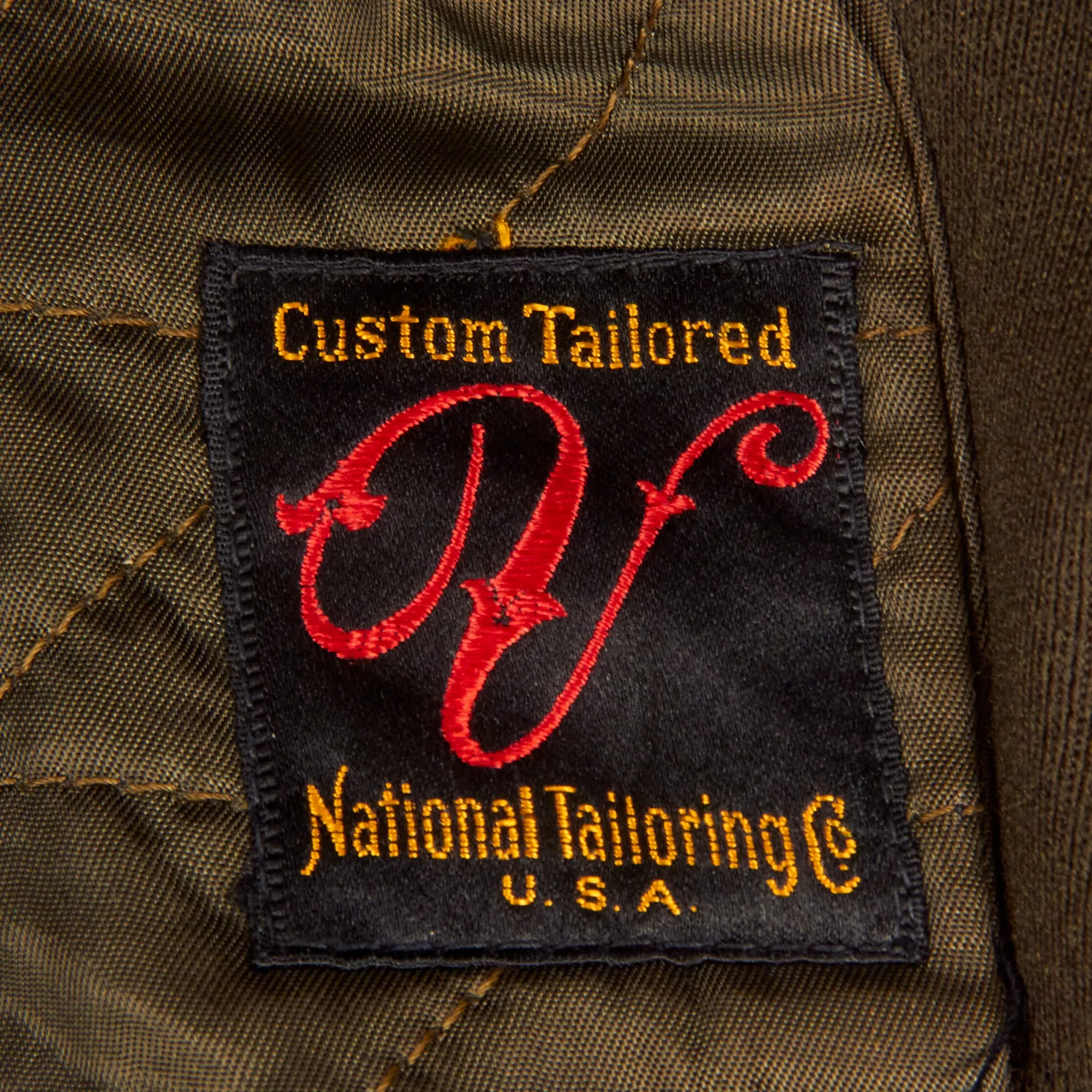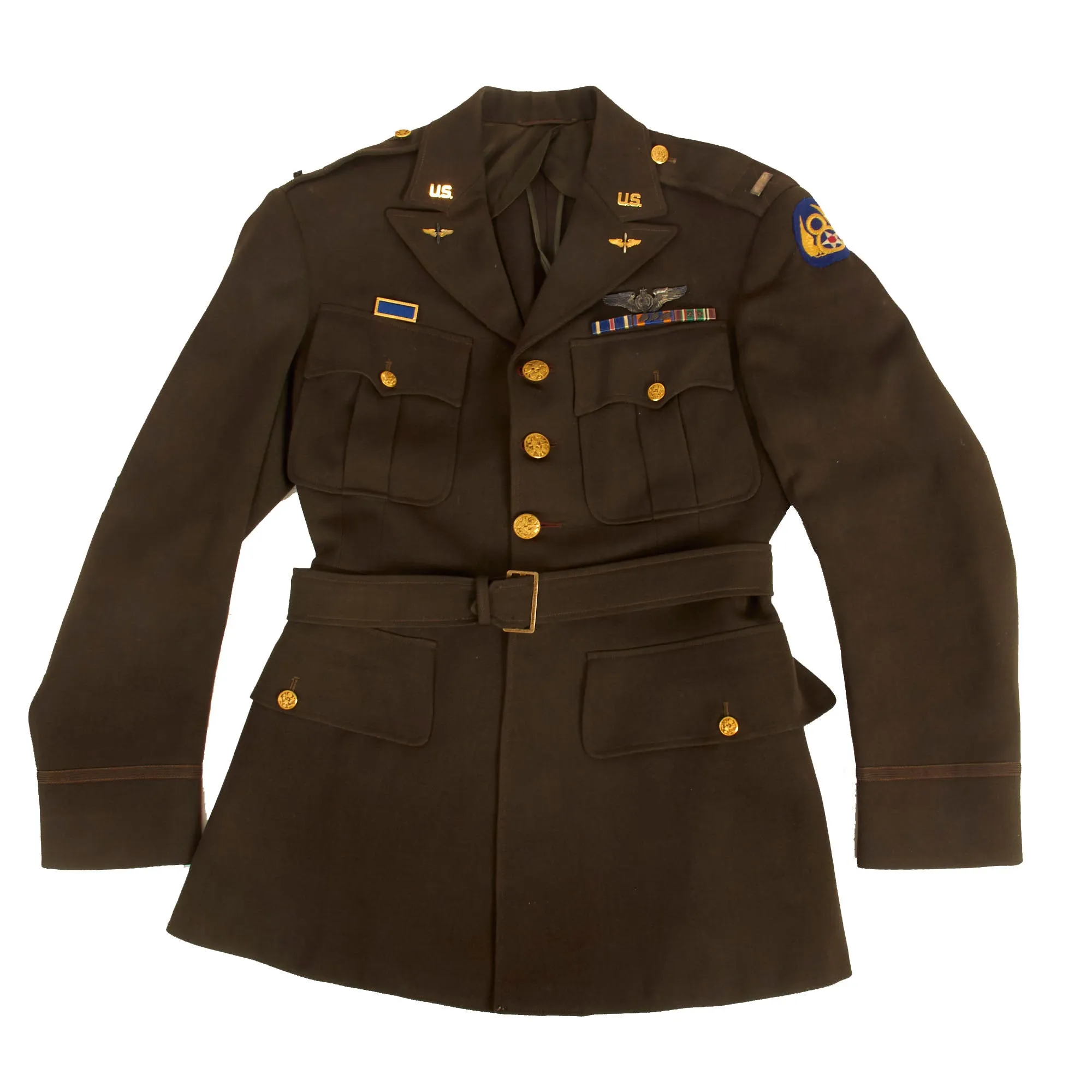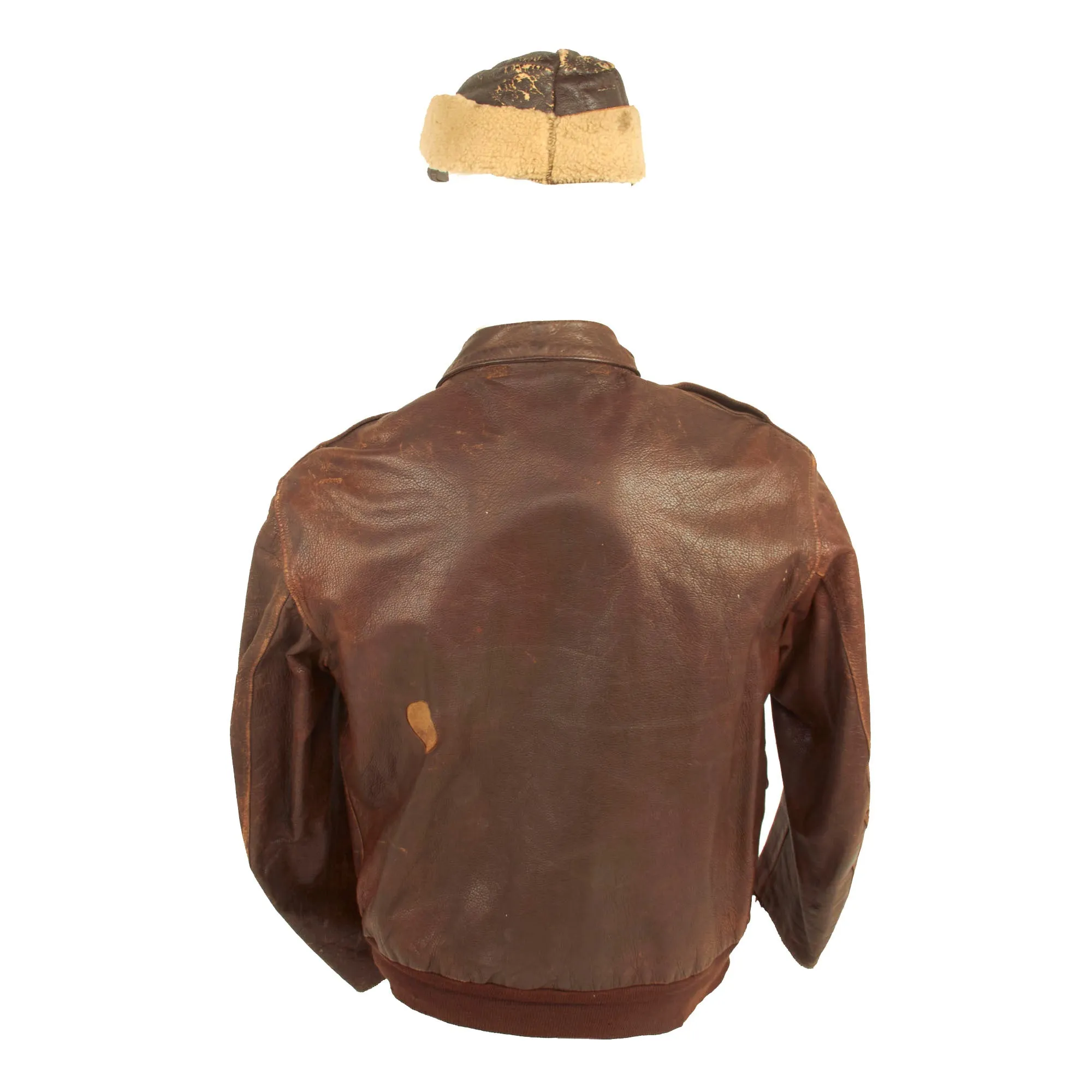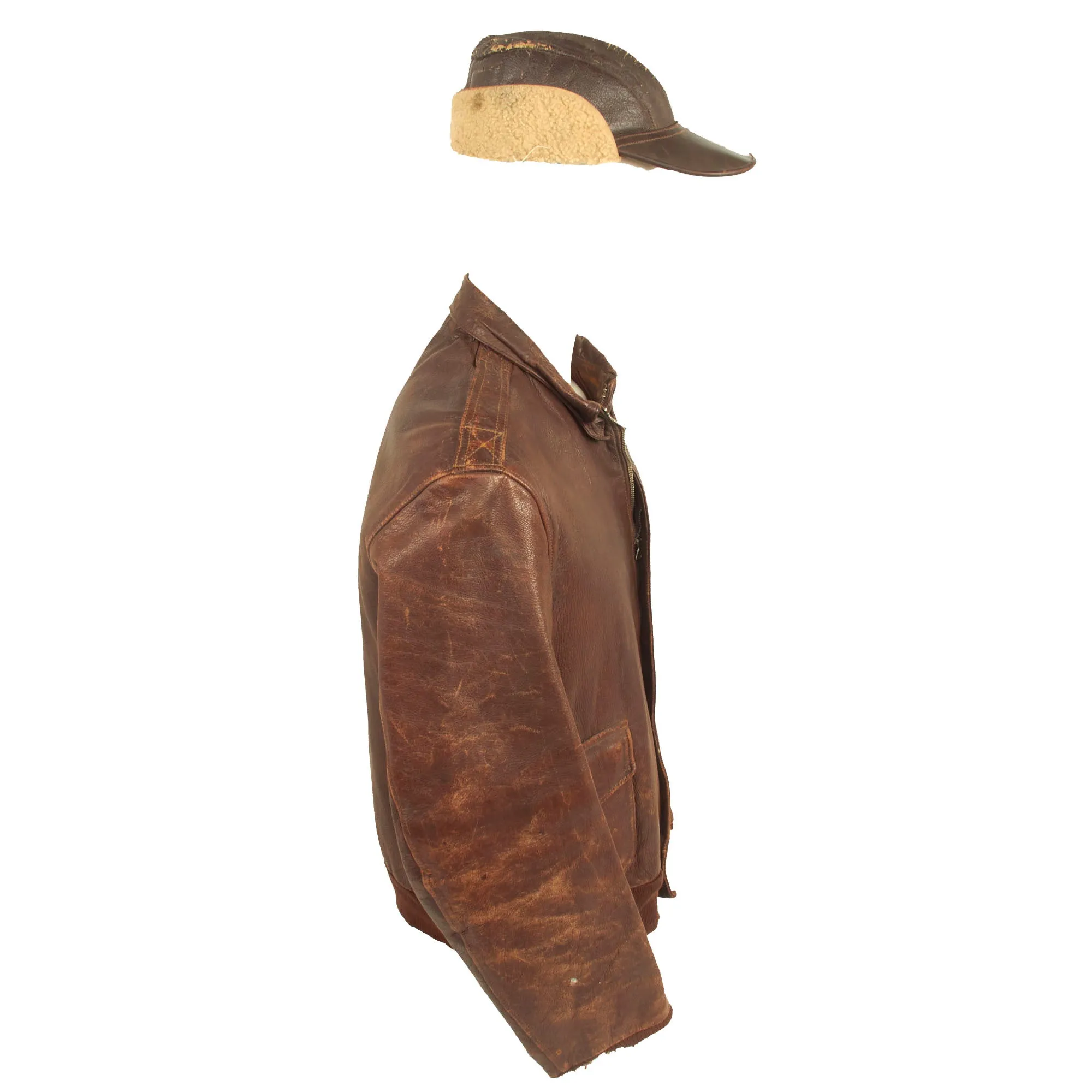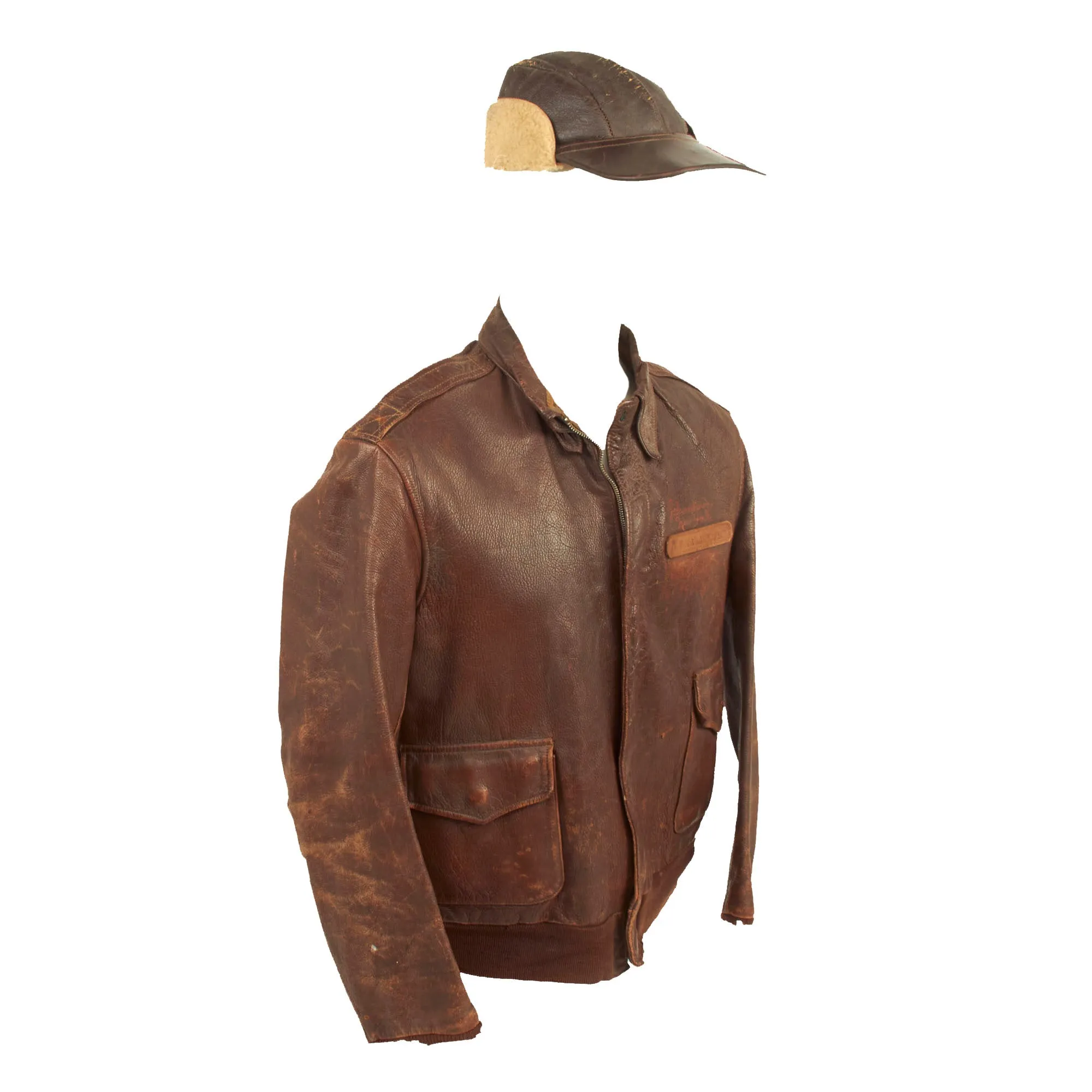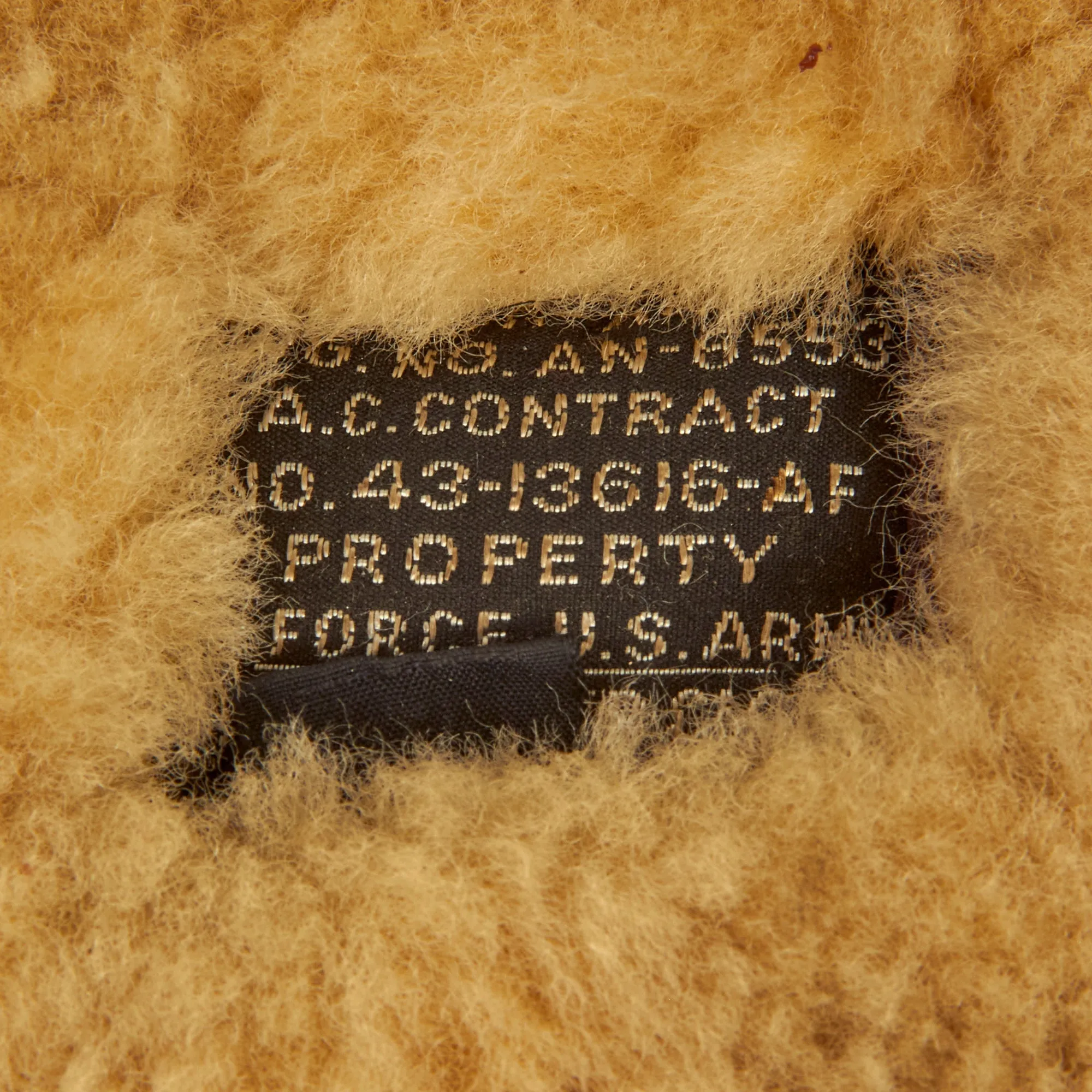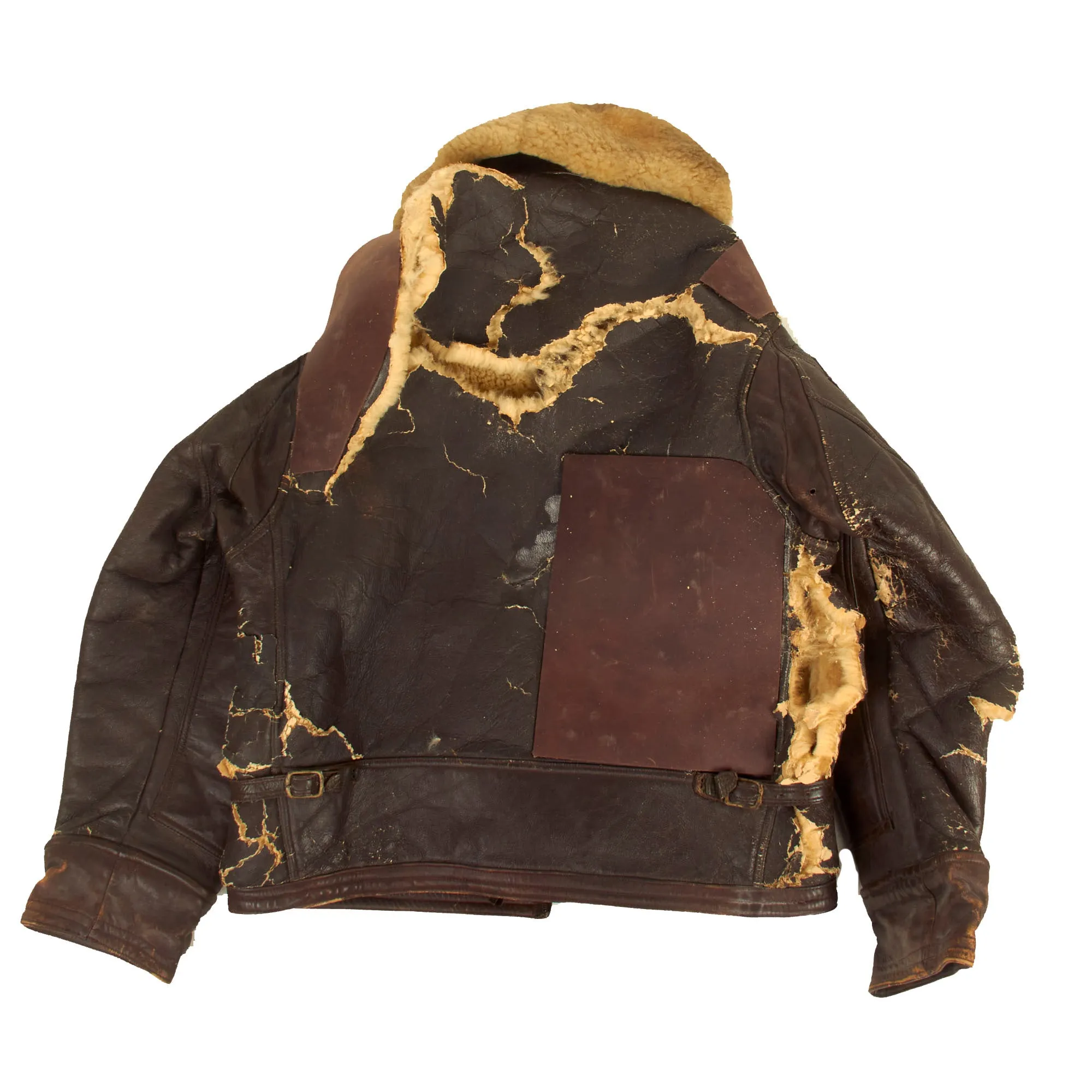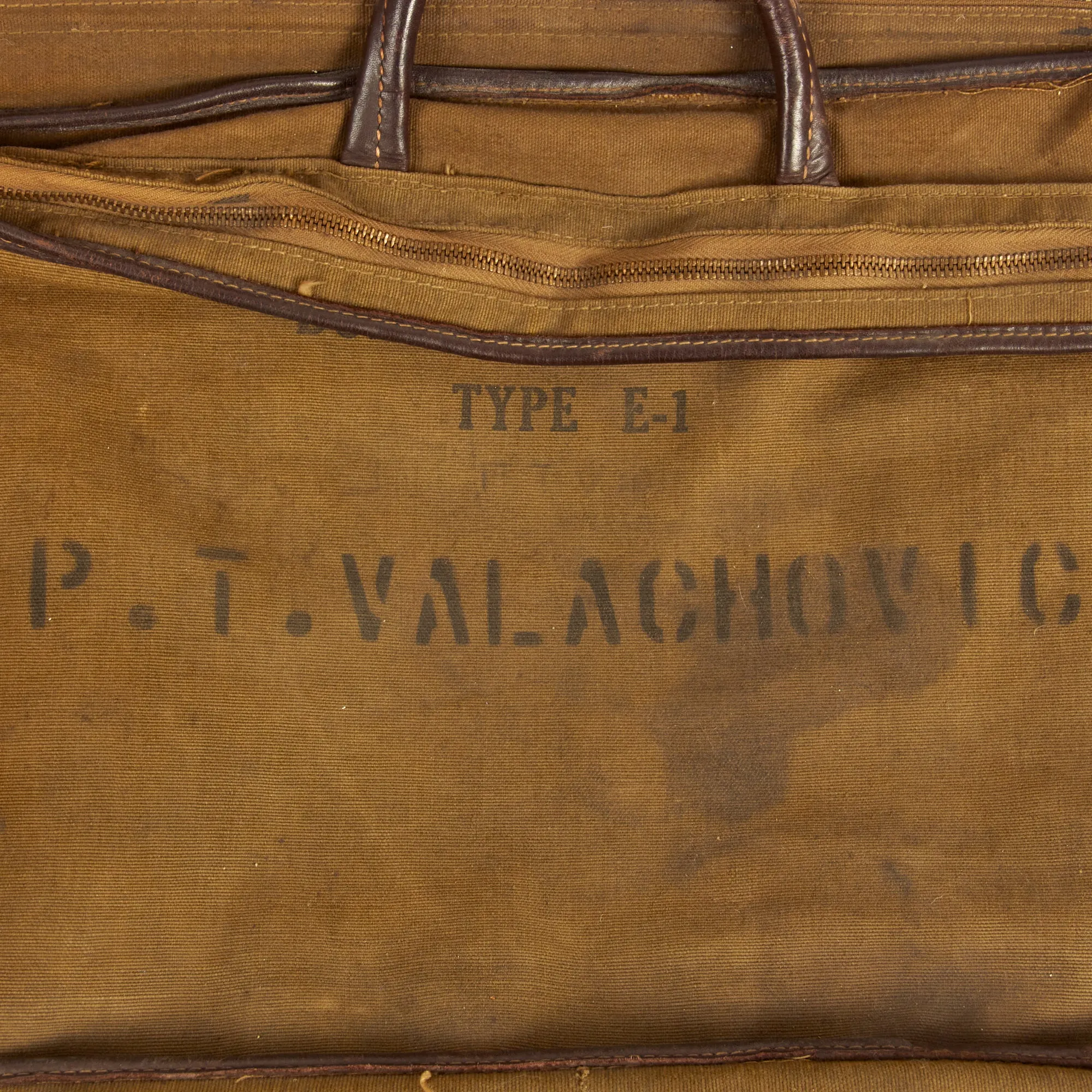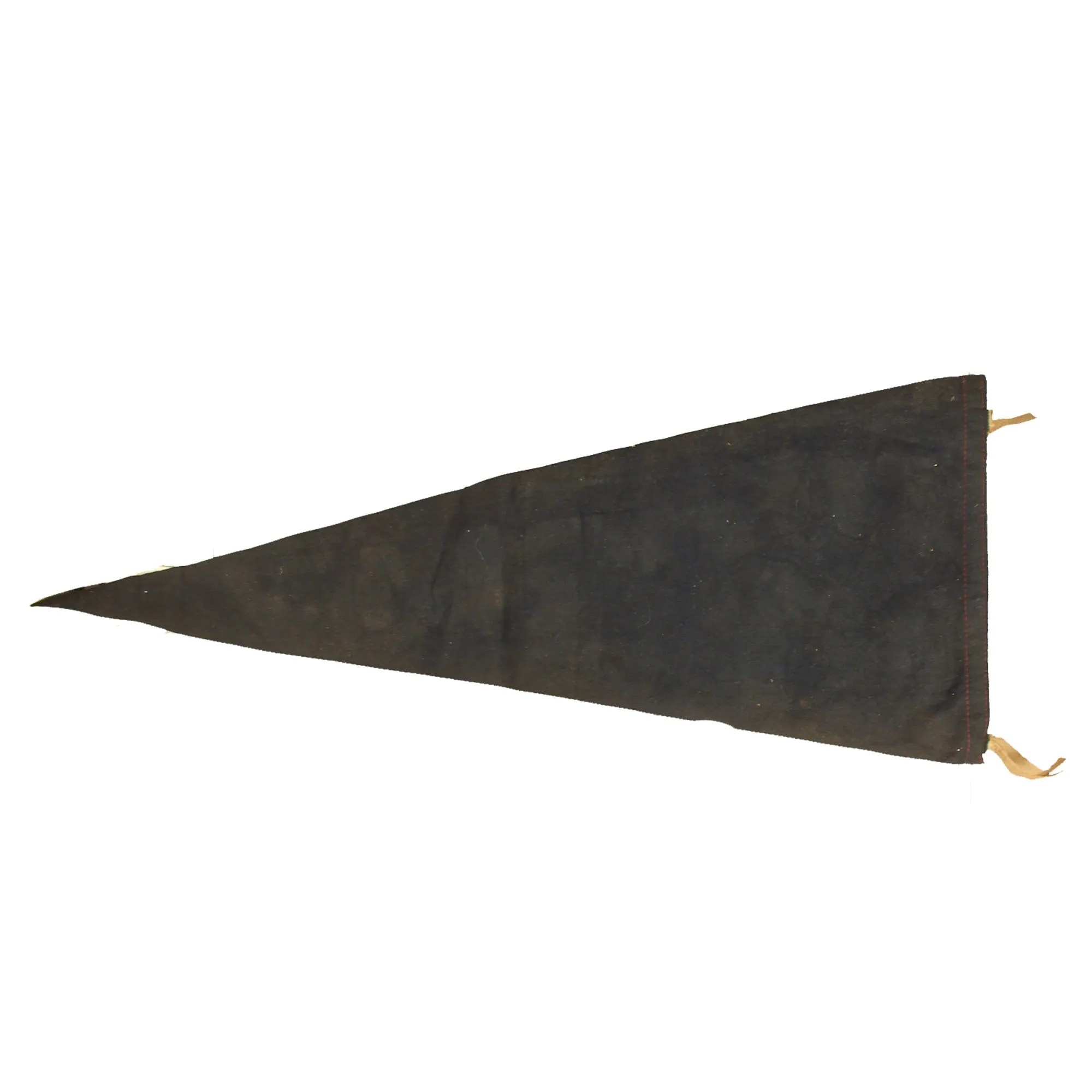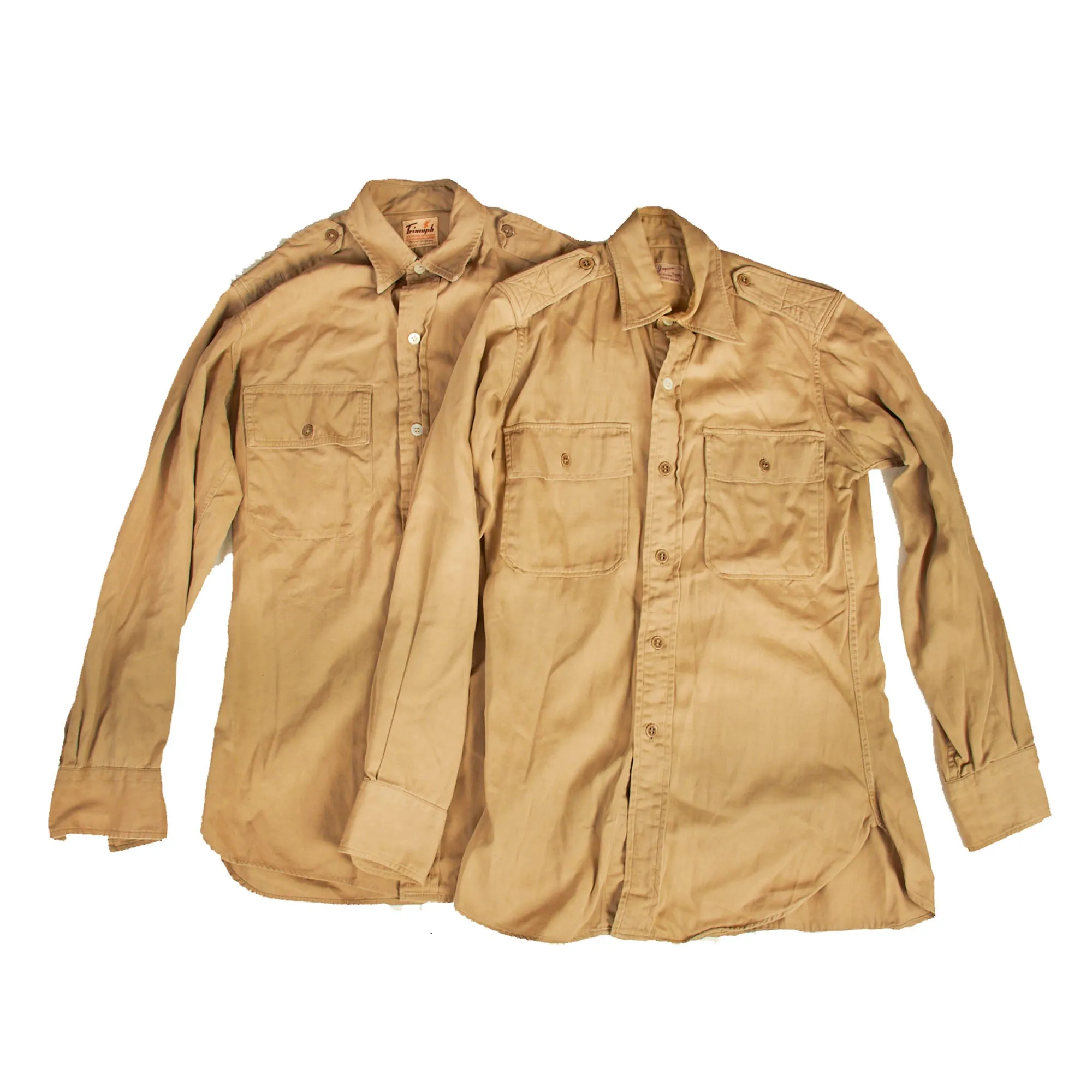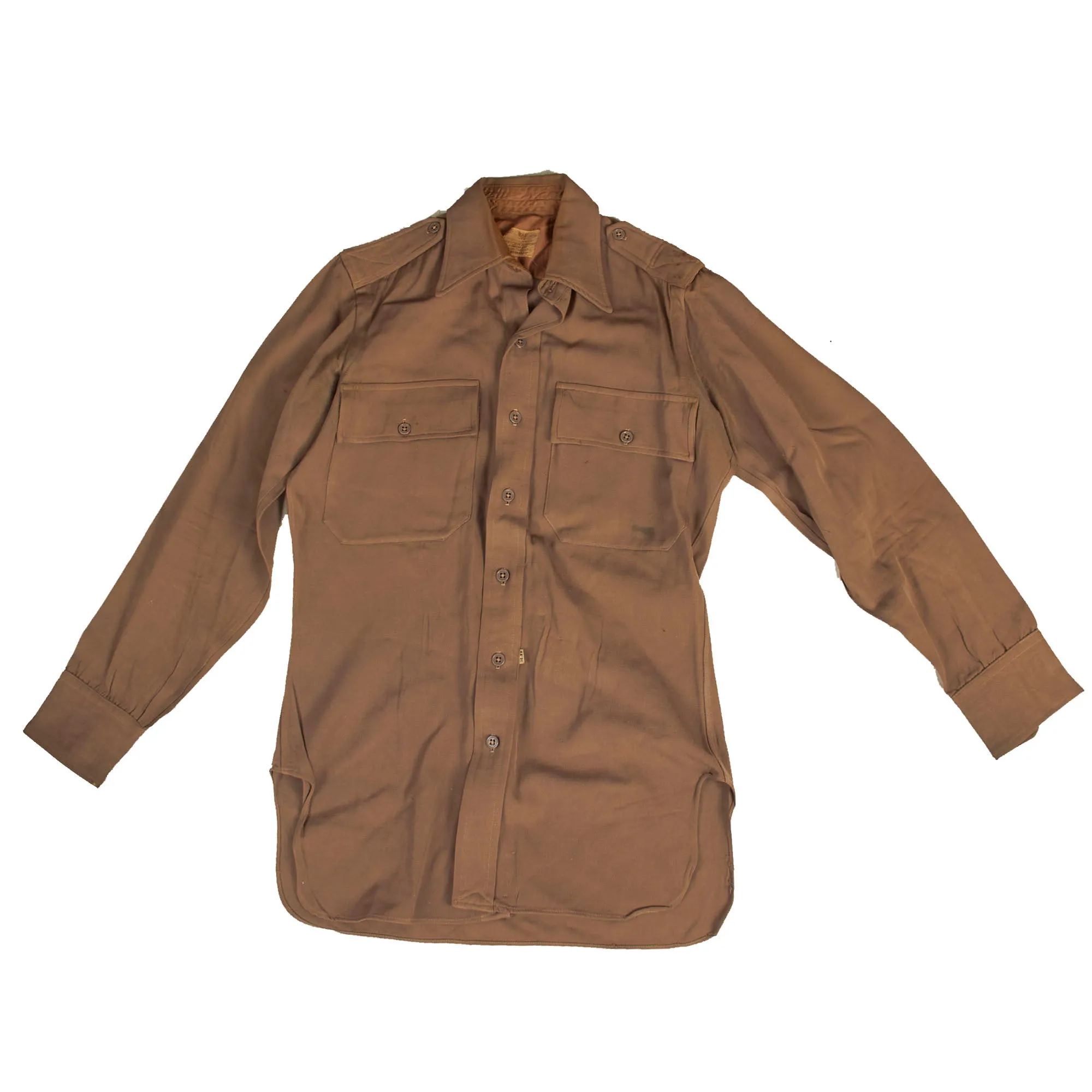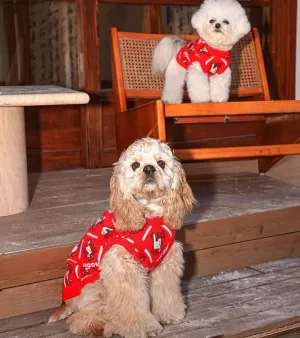Product Details
+Original Item: Only One Available. This is an incredible and large grouping for US 8th Air Force Bombardier 1st Lieutenant Paul T. Valachovic. Valachovic served as a dead reckoning bombardier aboard the B-24H-20 Liberator Rebel Gal with the 489th Bombardment Group, 845th Bomb Squadron under command of the 8 US Army Air Force. Dead reckoning is the art of knowing where you currently are by using a compass, your ground speed, a clock and an initial known position. During his time in the service he flew 32 combat missions over France and Germany.
Fortunately, we were able to discover a flckr website that serves as a digital photo archive for a majority of his service during World War II. All images contain captions and were uploaded by his son. The link with these images can be foundAccording to b24bestweb.com, Rebel Gal was "One of the original 489th BG aircraft (8/489/845 T4 S) and of its 89 sorties, 72 were flown with 489th. The 17 with 392nd BG (578th BS) were flown between 25 Nov 44 and 15 Apr 45 -an average of only about three a month." 392nd BG records show that she flew 89 missions. Rebel Gal made it through the war and was returned to the US June 3, 1945.
Notable Items in this Collection:
- Two Named A-2 Leather Flight Jackets: These flight jackets, unpainted examples, are a rarity, especially having two named from the same individual! Both of the jackets retain their original “PROPERTY OF AIR FORCE U.S. ARMY labels with mostly legible markings. One of the jackets, the lesser worn example is marked as being size 40 with the other being a 38. One of the jackets was somewhat modified as it appears to have had the sleeve cuffs deliberately cut away, this was most likely done to mitigate any snags on the equipment he was operating, errors meant life or death for these crewmen. Both the CROWN and TALON brand zippers are period original to the jackets. While they both show moderate to extensive wear, they are both offered without any extensive damage. They both retain all original components.
- Named “Pinks and Greens” U.S. Army Winter Service Uniform: The uniform is named on the interior pocket of Valachovic. The uniform set itself is in wonderful condition and has a beautiful British made blue felt embroidered 8th Army Air Force roundel on the left shoulder. Also present on the uniform is a set of sterling silver bombardier wings, 1st Lieutenant bars on each collar as well as (3) ribbon awards for; Silver Star, Air Medal (3 OLC) and EAME (2 Stars). The uniform is in overall really nice condition with no extensive damage and minimal fading.
- Named M-1941 “Parson’s” Field Jacket With Name Tag: The Jacket, Field, O.D. (also unofficially known as O.D. Cotton Field Jacket, Parsons Jacket, or M1941) is a field jacket that was used by US Army soldiers, most famously during the beginning of World War II. In 1941 it started to be phased in as a replacement for the wool four-pocket service coat of World War I, but around 1943 it was replaced in turn by the improved M1943 model. Owing to wide adoption, the M1941 is usually recognized as a symbol of the World War II American G.I. The jacket was made in a light shade of olive drab called O.D. number 2.
The jacket is in really good condition and shows no signs of extensive damage with light wear.
- Named B-2 Gunner and Air Crew Shearling Leather Cap Size 7: This is a nice example of a U.S. WWII Army Air Forces B-2 Shearling Leather Billed Cap. These were designed for cold weather as well as sun protection for the eyes. Period photographs show these being used by Bomber Air Crew and Gunners, as well as members of the ground crew. It used to be very common for Air and Ground crew alike to paint their name underneath the bill, and then turn it upward so that others would easily know who they were.
The cap is in good condition, with great shearling wool still intact on the inside of the cap, and the correct folded up neck flap, which could be folded down but was not often done. The exterior has some wear to the leather finish, and some small areas of loss in the piping. The pressed paper brim is in good shape as well. Size is medium which translates to a US 7 (56cm).
- Two Named Officer Winter Crush Visor Cap - FLIGHTER by BANCROFT: One of the most iconic pieces of headgear to come out of WWII was the U.S. Crusher Cap, or “Fifty Mission Cap”. This visor cap, in winter OD green issue color, was made by Bancroft, which is well marked in the crown and sweatband. The cap is roughly size 6 ⅞. The outward appearance is worn from honest use, and decades of storage wear. It retains the original iconic "crush" shape. The sweatband is embossed in gold “FLIGHTER by BANCROFT" with patent number and “Curve Control”. In addition, the Bancroft label is somewhat visible underneath the now stiffened weatherproof lining in the crown.
The cap was certainly used and is a bit misshapen from long storage, However, with some effort and form fitting it will come back to form. The leather sweatband does have some extensive detach and popped threading. Size is approximately US 6 ¾.
- Named B-1 Flight Cap WIth Name Tag: Standardized in 1939, the B-1 was issued to all flight personnel, and can be seen being worn in all theaters of operations during WWII. The cap does show signs of use and wear but is presented without any extensive damage.
- (5) Various Uniform Shirts: All do show wear and use but are otherwise presented without any extensive damage. Only the 2 green service shirts have the US Army Air Forces shoulder insignia.
- (3) Overseas Caps: 2 of the 3 are named or have the PTV initials present. They are a little faded and stained but still in wonderful condition.
- 30” x 12” Felt “ARMY” Pennant: In really good condition with minimal moth nips present.
- 8 ½” x 11 ½” “WEST POINT” Banner: We have not been able to locate any information on when he attended USMA making this another wonderful research item.
- “The B-24 Story” 75min VHS Tape: We have not tested the tape to see if it is functional but the film appears to be undamaged. Dust off your VCR as this could contain so great information.
- (12) Various Books and Pamphlets: These include training manuals, a map, dictionary, transitioning to civilian life and more. A few of these would have been vital for military operations.
- Navigational Computer Set: This computer was used essentially as an airspeed, Altitude Correction, directions and more. They shows signs of wear but are still completely legible.
- Type E-1 Bombardiers Case Bag: This would essentially have served as his briefcase for holding all documents, maps, computers and all that is needed for a mission. It is still marked accordingly and appears to be without any extensive damage.
- AN 6505-1 Aviators Kit Bag: Still marked properly and with a name tag. This bag would have been used for his “kit” such as his flight helmet, oxygen mask, extra clothing if needed, any personal items and so on.
- Photo archive - All photos will be provided in digital format.
All in all this is an incredible and large grouping for a WWII B-24 Bombardier. Large groupings like this, especially ones that can be tied to a single person, are very rarely encountered in today’s market. This one has an almost unlimited amount of research potential so you do not want to miss your chance on this one!
Comes more than ready for further research and display.
845th Bombardment Squadron
The 845th Bombardment Squadron is an inactive United States Air Force unit. It was last assigned to the 489th Bombardment Group. It was assigned to the 489th Bombardment Group, flying Consolidated B-24 Liberators. After training in the United States, it moved to England and engaged in the strategic bombing campaign against Germany until V-E Day. It returned to the United States in 1945 and began training with the Boeing B-29 Superfortress, but was inactivated at March Field, California on 17 October 1945.
The 845th Bombardment Squadron was activated as a Consolidated B-24 Liberator heavy bomber squadron on 1 October 1943 at Wendover Field, Utah, one of the four original squadrons of the 489th Bombardment Group. The squadron completed combat training and departed Wendover on 3 April 1944. The air echelon flew to the United Kingdom via the southern ferry route along the northern coastline of South America and across the Atlantic to Africa before heading North to England. The ground echelon sailed from Boston on board the USS Wakefield on 13 April 1944, reaching Liverpool on 21 April. The squadron arrived at RAF Halesworth, England, in April 1944, where it became part of Eighth Air Force.
Combat in Europe
The squadron entered combat on 30 May 1944 with an attack on Oldenburg, Germany. It then concentrated on striking targets in France to prepare for Operation Overlord, the invasion of Normandy. The 845th supported the landings on 6 June 1944, and afterward bombed coastal defenses, airfields, bridges, railroads, and V-1 flying bomb and V-2 rocket launch sites (Operation Crossbow) in the campaign for France. It participated in the saturation bombing of German lines just before Operation Cobra, the breakthrough at Saint-Lô in July.
The 845th began flying strategic bombing missions to Germany in July, and engaged primarily in bombing strategic targets such as factories, oil refineries and storage areas, marshalling yards, and airfields in Ludwigshafen, Magdeburg, Brunswick, Saarbrücken, and other cities until November 1944. The squadron dropped food to liberated French and to Allied forces in France during August and September, and carried food and ammunition to the Netherlands later in September. For these missions, a loadmaster from IX Troop Carrier Command directed the drops from the bombers. On other missions, squadron aircraft flew into Orleans/Bricy Airfield to deliver supplies.
Redeployment for the Pacific
The squadron was part of the first group in Eighth Air Force selected for redeployment to the Pacific theater and became non-operational on 14 November 1944, with most of its B-24s assigned to other groups in England. It was relieved of assignment in the European Theater on 29 November 1944, and returned to the United States.
The 845th Squadron returned to Bradley Field Connecticut at the end of December 1944, where most returning personnel were reassigned to other units while the squadron moved to Lincoln Army Air Field, Nebraska. At Lincoln it again became part of Second Air Force. On 22 January 1945, the squadron's personnel were informed that previous plans for refresher training had been cancelled and instead the squadron and its associated 369th Air Service Group were retrained as Boeing B-29 Superfortress combat and support units. However Second Air Force did not receive redesignation orders for the group until 17 March, until which time they were compelled to maintain duplicate rosters and tables of organization, one for a heavy bombardment group of four squadrons, and one for a very heavy bombardment group of three squadrons. The readiness date for the group air echelon was set back from 1 March to 1 August 1945. The squadron moved to Great Bend Army Air Field, Kansas in mid-February to re-equip with the B-29, and was redesignated the 845th Bombardment Squadron, Very Heavy in March.
The group was alerted for movement overseas in the summer of 1945, but with the Japanese surrender, the squadron was inactivated on 17 October 1945.







